Home > Resources > Halyards, Sheets, and Lines: A Guide to Choosing and Maintaining Your Sailboat Rigging

Halyards, Sheets, and Lines: A Guide to Choosing and Maintaining Your Sailboat Rigging
11 May 2023
Ask Precision Sails , Hardware , Maintenance , Technical
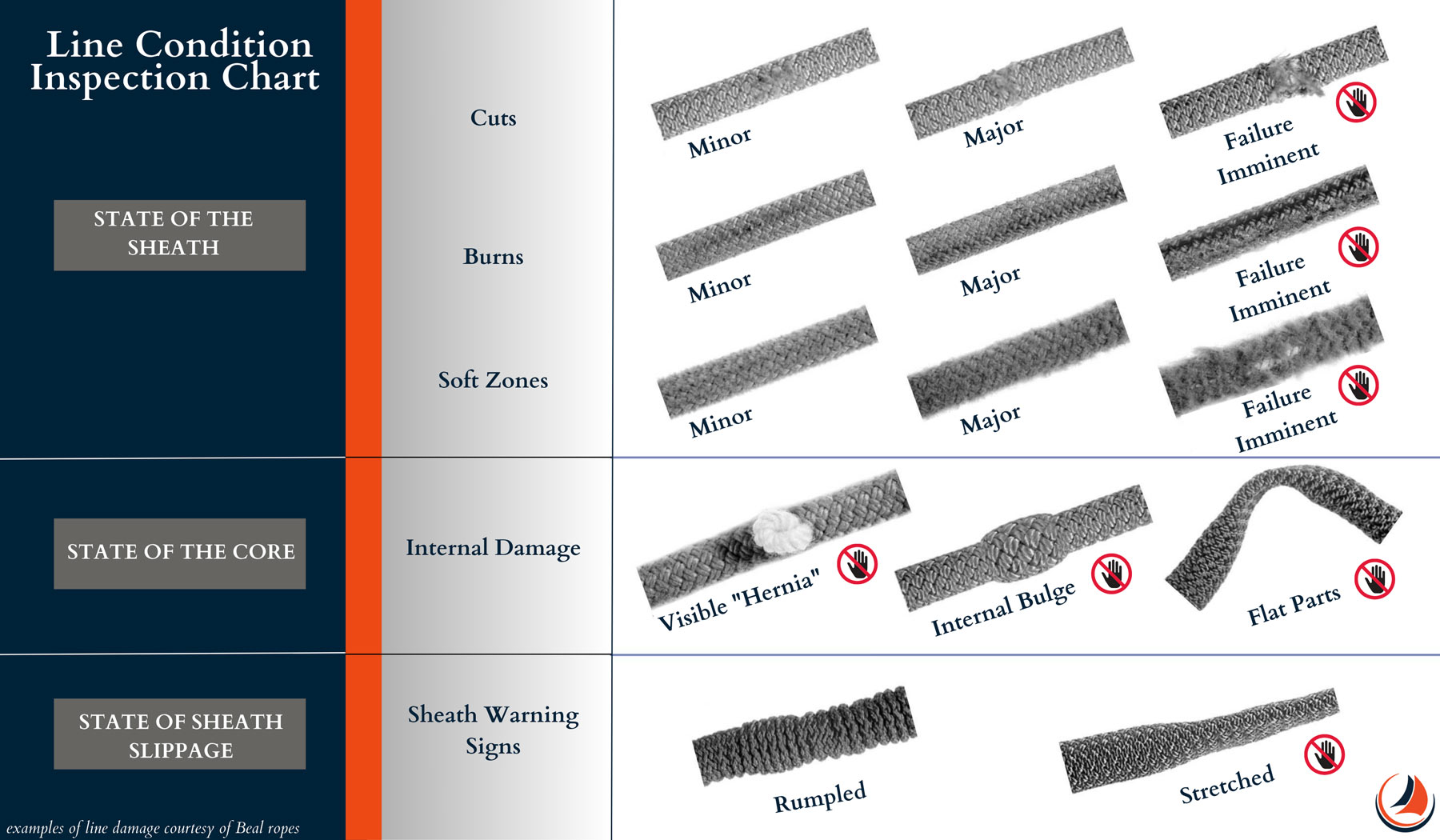
How to Choose the Right Halyard/Sheet
When choosing a halyard for your sailboat, several factors come into play. These include the weight of the sail, the type of sail, the sailboat’s size, and the expected wind conditions. You should also consider the halyard’s stretch, which affects sail shape and performance. It is essential to choose a halyard that matches the load the sail will have on the line. Low-stretch halyards are ideal for racing and performance sailing, where every fraction of a knot counts.
Some Things to Consider when Choosing a Halyard or Sheet Include:
- Material: The material you choose for your line can affect its strength, durability, and stretch resistance.
- Diameter: The diameter of your halyard or sheet should be appropriate for the load the sail will apply to it and the size of your boat.
- Length: The length of your halyard or sheet should allow you to run your lines wherever they are needed, plus some extra for you to trim and tie off with.
- Attachment: The type of attachment you choose for your halyard or sheet can change depending on how you run your sheets and how the head of your sail is configured.
- Review Your Options: Making a decision about lines can be daunting, luckily Precision Sails has made it easy for you to pick your halyard or sheets by simplifying the process into two groups and pre-selecting the diameter, length, and attachment for your boat and line.
Here is a Quick Guide to Explain Material Choice:
The Precision Cruising series employs high-quality polyester lines, which are a good all-around option for starting and performing well. Polyester halyards and sheets are the most common and suitable for most sizes of sailboats, but they do stretch more than other lines like dyneema, spectra, or stirotex, which can affect sail shape and performance.
To address this, the Precision Performance series focuses on using stronger and stretch-resistant inner cores, making them ideal for racing sailboats that require high precision and tight tolerances. These lines are made of stirotex, which you may recognize by the name of spectra or dyneema. Stirotex is a chemically identical variation. The parent compound in these high-tension lines is HMPE. These lines are the strongest and least stretchy, making them the top choice for high-performance racing sailboats.
How to Maintain Your Halyards, Sheets, and Lines
Proper maintenance of your halyards is crucial for their longevity and reliability. Some tips for maintaining your halyards include:
Maintenance Checklist
- Regular inspection: Check your lines regularly for signs of wear, fraying, or damage.
- Cleaning: Clean your halyards and sheets periodically with soap and water to remove dirt and salt buildup.
- Lubrication: Lubricate your halyards and sheets with a silicone spray or dry lubricant to reduce friction and wear.
- Storage: When not in use, store your lines coiled neatly and out of direct sunlight if you can.
Signs of Wear – How to Inspect Your Lines
Lines that show obvious signs of deterioration must be discarded and replaced immediately. One of the most apparent and hazardous signs of wear on a line is a cut or damaged sheath that exposes the core. In such cases, it is important to retire the line immediately to prevent any further damage or potential failures.
Other signs may include hardness around the sheath or fuzziness. These signs may be particularly evident near the connection points or any areas of high friction. It’s also important to pay attention to any changes in the handling or feel of the line, as this may indicate internal damage or other issues that require attention.
A way to protect your investment is proper care and cleaning and avoiding the use of harsh chemicals or high-pressure washers, which can damage the fibers. This can be done by soaking them in a bucket of warm water with mild soap or detergent, then rinsing thoroughly and allowing them to air dry. This helps to remove any salt, dirt, or grime that may have accumulated, which can cause premature wear and tear if left unchecked.
A way to visualize this is to envision dirt particles getting trapped between the fibers of the line and causing small tears in the weave. When the line is put under tension, these dirt particles act like miniature saw blades, gradually weakening the line over time and potentially leading to catastrophic failures. Therefore, regular cleaning and maintenance of your lines, including halyards and sheets, is essential to ensure their longevity and reliability and to avoid any dangerous situations while out on the water.
Inspecting Your Lines for Damage
Pro tip: Usage level and proper care is a more important indicator than age
Let’s dispel some common misconceptions about when to retire a sailboat line. For example, some sailors may retire a line based solely on its age, rather than its condition. We want to stress the importance of inspecting lines regularly and retiring them when signs of wear or damage are detected, regardless of their age. Here’s a helpful checklist so you know what to look for on your lines.
Inspection Checklist
- Check for visual signs of wear and tear, such as fraying or abrasions, which can weaken the line and compromise its strength. Be sure to examine the line thoroughly, paying particular attention to any areas of high friction or wear.
- Run your hands along the length of the line, feeling for any hard or soft spots, which can indicate internal damage or wear. If you detect any abnormalities, consider retiring the line or seeking professional advice.
- Look for any signs of UV damage, which can cause the line to degrade over time. This is particularly important for lines that are exposed to sunlight for extended periods.
- Check the diameter of the line, ensuring that it matches the manufacturer’s specifications. Any significant deviations may indicate that the line has been stretched or otherwise damaged.
- Examine the connection points, including splices and knots, ensuring that they are secure and free from any signs of wear or damage.
To recap, lines, halyards, and sheets are an essential component of any sailing vessel, and choosing the right halyard for your boat is a necessary part of outfitting your vessel. Regular maintenance and proper care of your halyards can ensure their longevity and reliability. We hope this article has provided valuable insights into halyards, sheets, and lines, though we understand that it may seem like a lot of information.
If you feel overwhelmed by the amount of information, don’t worry, we have simplified the process of finding the right line for your boat. Simply fill out a form , and we will send you the best fit and our professional opinion based on the type of sailing you plan on doing. If you have any questions, comments, or wish to order lines from our sail consultants, please don’t hesitate to contact us.
FAQ’s
Q: What is a sailboat halyard?
A: Halyards are ropes or lines used to hoist sails, flags, and other equipment on a boat.
Q: What is a sailboat sheet?
A: A sailboat sheet is a line that is attached to the lower corner of a sail and used to control its position relative to the wind. The sheet is usually led through a block or a series of blocks, which allow the sailor to adjust the sail’s angle and trim it for maximum efficiency. In addition to controlling the sail’s position, the sheet also helps to control the sail’s shape and tension, which can affect the boat’s speed and handling.
Q: Can different types of materials be used to make halyards, sheets, and lines?
A: Yes, lines can be made of various materials such as polyester, nylon, stirotex, and dyneema. Each material has its own strengths and weaknesses, and the choice of material depends on the type of sailing and personal preference.
Q: How do I determine the length of halyard I need for my sailboat?
A: It’s important to consult with a sail consultant or experienced sailor to ensure you get the correct length. The length of halyard you need will depend on the height of your mast, the type and size of the sail you will be using, and where you plan on trimming your sails. Calculating the length is more complex than simply taking a guess, not to worry though, we have made it easy. Give us a call or fill out our form to let our system crunch the numbers for you.
Q: How do I know if my halyard or sheets are due for replacement?
A: Look for signs of wear and tear such as fraying, kinking, or stretching. If the line feels stiff or brittle, it may be time to replace it. Additionally, if you notice any damage to the sheave or winch, this may also indicate the need for a replacement. See the checklist above for detailed instructions.
Q: Are there any safety precautions I should take when using halyards and sheets?
A: Yes, it’s important to properly understand how to use a winch and don’t wrap the rope around your arm or fingers. Always be aware of your surroundings and avoid getting entangled in halyards or other lines. It’s also recommended to have a backup halyard in case of failure or emergency situations.
Q: How can halyards affect the performance of a sailboat?
A: The type of halyard used can have an impact on the performance of the sailboat. For instance, a stretchy halyard may cause the sail to lose its shape by releasing the tension on the sail over time, while a stretch-resistant halyard can help the sail maintain its shape in strong winds.
Q: Is it possible to splice or repair a damaged halyard or sheet?
A: It is possible to splice or repair a damaged halyard, depending on the extent of the damage and the material of the halyard. However, it’s essential to have the repair done by a professional or experienced sailor to ensure the halyard’s continued reliability and safety.
Q: How often should I replace my lines?
A: The lifespan of halyards and sheets can vary depending on factors such as usage, exposure to weather, and material. It’s recommended to regularly inspect your lines for wear and tear and replace them as needed. Condition is a much stronger indicator than age. Assuming light use and good condition, some materials like Stirotex have a longer lifespan, other materials may need to be replaced more often. In general, halyards and sheets should be replaced every 3-5 years for optimal safety and efficiency.
Related Posts

Full Battens vs Partial Battens vs 2 Full plus 2 Partial Battens
Full Battens VS Partial Battens At
Precision Sails we are asked every day during our customer quote consultation “Should I choose Full Battens or Partial Battens for my new mainsail?” Whether you are cruising or racing you will need to examine the pros and cons of adding full battens to your main sail.Positive Aspects of Full […]

My Need for Cruising Speed Demands a Great Suit of Sails
My Need for Cruising Speed Demands a Great Suit of SailsI like to sail fast mostly in the heavy winds that Lake Ontario throws.
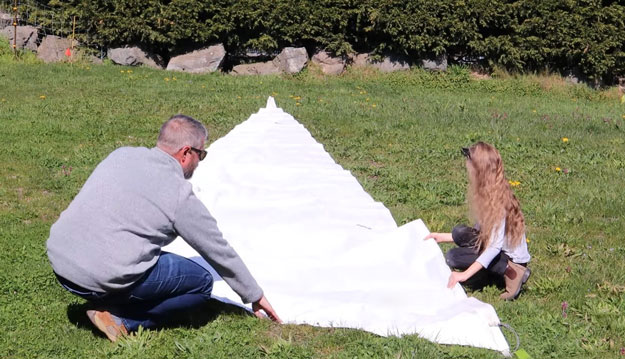
How to Fold a Sail (Mainsail or Headsail) For safe Storage
Knowing how to fold a sail correctly will make your sails last longer and make them easier to set. Replacement sails are an investment and folding them properly is important to their longevity.
" * " indicates required fields
Thanks for telling us a bit about yourself and your boat. Our team will send you a preliminary quote based on information we have gathered from sailors similar to you.
We will give you a call in order to narrow down the options on your quote and improve the accuracy. If you want us to call you at a specific time, feel free to schedule a time on our calendar!
Thanks for telling us a bit about yourself and your boat. Our team will reach out to offer some suggestions and get started on finding you the perfect sail!

Currency: GBP
- Worldwide Delivery
Mooring Warps and Mooring Lines
- LIROS 3 Strand Polyester Mooring Warps
- LIROS Green Wave 3 Strand Mooring Warps
- LIROS Braided Dockline Mooring Warps
- LIROS Handy Elastic Mooring Warps
- Marlow Blue Ocean Dockline
- LIROS Super Yacht Mooring Polyester Docklines
- 50 metre / 100 metre Rates - Mooring
Mooring Accessories
- Mooring Compensators
Mooring Strops and Bridles
- V shape Mooring Bridles
- Y shape Mooring Bridles
- Small Boat and RIB Mooring Strops
- Mooring Strops
- Mooring Strops with Chain Centre Section
Mooring Assistance
- Coastline Bow Thruster Accessories
- Max Power Bow Thrusters
- Bonomi Mooring Cleats
- Majoni Fenders
- Polyform Norway Fenders
- Ocean Inflatable Fenders
- Dock Fenders
- Fender Ropes and Accessories
Mooring Components
- Mooring Swivels
- Mooring Shackles
- Mooring Cleats and Fairleads
- Mooring Buoys
Mooring Information
- Mooring Warps Size Guide
- Mooring Lines - LIROS Recommended Diameters
- Mooring Rope Selection Guide
- Mooring Warp Length and Configuration Guide
- How to estimate the length of a single line Mooring Strop
- Mooring Ropes - Break Load Chart
- Mooring Compensator Advisory
- Rope Cockling Information
- Fender Size Guide
- Majoni Fender Guide
- Polyform Norway Fender Inflation Guide
- More Article and Guides >
Anchor Warps Spliced to Chain
- LIROS 3 Strand Nylon Spliced to Chain
- LIROS Anchorplait Nylon Spliced to Chain
Anchor Warps
- LIROS Anchorplait Nylon Anchor Warps
- LIROS 3 Strand Nylon Anchor Warps
- Leaded Anchor Warp
- Drogue Warps and Bridles
- 50 / 100 metre Rates - Anchoring
- Aluminium Anchors
- Galvanised Anchors
- Stainless Steel Anchors
Calibrated Anchor Chain
- Cromox G6 Stainless Steel Chain
- G4 Calibrated Stainless Steel Anchor Chain
- Lofrans Grade 40
- MF DAMS Grade 70
- MF Grade 40
- Titan Grade 43
- Lewmar Windlasses
- Lofrans Windlasses
- Maxwell Windlasses
- Quick Windlasses
- Windlass Accessories and Spares
Chain Snubbers
- Chain Hooks, Grabs and Grippers
- Chain Snubbing Bridles
- Chain Snubbing Strops
Anchoring Accessories
- Anchor Connectors
- Anchor Trip Hooks and Rings
- Anchoring Shackles
- Bow Rollers and Fittings
- Chain and Anchor Stoppers
- Chain Links and Markers
Anchoring Information
- How To Choose A Main Anchor
- Anchoring System Assessment
- Anchor Chain and Rope Size Guide
- The Jimmy Green Guide to the Best Anchor Ropes
- What Size Anchor Do I Need?
- Anchor to Chain Connection Guide
- How to Choose Your Anchor Chain
- How to Establish the Correct Anchor Chain Calibration?
- Calibrated Anchor Chain - General Information
- Calibrated Anchor Chain Quality Control
- Calibrated Chain - Break Load and Weight Guide
- Galvanising - Managing Performance and Endurance expectation
- Can Galvanised Steel be used with Stainless Steel?
- Windlass Selection Guide
- More Articles and Guides
Stainless Steel Wire Rigging and Wire Rope
- 1x19 Wire Rigging
- 50 / 100 metre Rates - Wire and Fibre
- 7x19 Flexible Wire Rigging
- Compacted Strand Wire Rigging
Dinghy Rigging
- Stainless Steel Dinghy Rigging
- Dinghy Rigging Fittings
Fibre Rigging
- LIROS D-Pro Static Rigging
- LIROS D-Pro-XTR Fibre Rigging
- DynIce Dux Fibre Rigging
- Fibre Rigging Fittings
Wire Terminals
- Cones, Formers, Wedges, Ferrules, Rigging Spares
- Hi-Mod Swageless Terminals
- Sta-Lok Swageless Terminals
- Swage Terminals
Wire Rigging Fittings
- Turnbuckle Components
Rigging Accessories
- Rigging Chafe Protection
- Headsail Reefing Furlers
- Plastimo Jib Reefing
- Selden Furlex Reefing Gear
Furling Systems
- Anti-torsion Stays
- Straight Luff Furlers
- Top Down Furlers
Guard Wires, Rails and Fittings
- Guard Rail Fittings
- Guard Rails in Fibre and Webbing
- Guard Wire Accessories
- Guard Wires
Standing Rigging Assistance
- Replacing your Furling Line
- Fibre Rigging Break Load Comparison Guide
- More Articles and Guides >
- Cruising Halyards
- Performance Halyards
- Dinghy Halyards
Rigging Shackles
- Captive and Key Pin Shackles
- hamma™ Snap Shackles
- Soft Shackles
- Standard Snap Shackles
- Wichard Snap Shackles
Classic Ropes
- Classic Control Lines
- Classic Halyards
- Classic Sheets
- Cruising Sheets
- Performance Sheets
- Dinghy Sheets
Sail Handling
- Boom Brakes and Preventers
- Lazy Jack Sail Handling
- Rodkickers, Boomstruts
- Sail Handling Accessories
50 / 100 metre Rates - Running Rigging
- 50 / 100 metres - Cruising Ropes
- 50 / 100 metres - Dinghy Ropes
- 50 / 100 metres - Performance Ropes
Control Lines
- Cruising Control Lines
- Performance Control Lines
- Dinghy Control Lines
- Continuous Control Lines
Running Rigging Accessories
- Anti-Chafe Rope Protection
- Lashing, Lacing and Lanyards
- Mast and Boom Fittings
- Rope Stowage
- Sail Ties and Sail Stowage
- Shock Cord and Fittings
- LIROS Ropes
- Marlow Ropes
Running Rigging Resources
- Running Rigging Rope Fibres and Construction Explained
- How to Select a Suitable Halyard Rope
- How to select Sheets and Guys
- Dyneema Rope - Cruising and Racing Comparison
- Dinghy Rope Selection Guide
- Rope Measurement Information
- Running Rigging - LIROS Recommended Line Diameters
- Running Rigging Break Load Comparison Chart
- Colour Coding for Running Rigging
- Selecting the right type of block, plain, roller or ball bearing
- Recycling Rope
- Running Rigging Glossary
Plain Bearing Blocks
- Barton Blocks
- Harken Element Blocks
- Low Friction Rings
- Selden Yacht Blocks
- Wichard MXEvo Blocks
- Wooden Yacht Blocks
Control Systems
- Ratchet Blocks
- Stanchion Blocks and Fairleads
- Snatch Blocks
- Genoa Car Systems
- Traveller Systems
- Block and Tackle Purchase Systems
Ball Bearing Blocks
- Harken Ball Bearing Blocks
- Selden Ball Bearing Blocks
Roller Bearing Blocks
- Harken Black Magic Blocks
- Selden Roller Bearing Blocks
Deck Fittings
- Bungs and Hatches
- Bushes and Fairleads
- Deck Eyes, Straps and Hooks
- Pad Eyes, U Bolts and Eye Bolts
- Pintles and Gudgeons
- Tiller Extensions and Joints
- Harken Winches, Handles and Accessories
- Barton Winches, Snubbers and Winchers
- Lewmar Winches, Handles and Accessories
- Winch Servicing and Accessories
Clutches and Organisers
- Barton Clutches and Organisers
- Spinlock Clutches and Organisers
- Lewmar Clutches
- Harken Ball Bearing Cam Cleats
- Barton K Cam Cleats
Deck Hardware Support
- Blocks and Pulleys Selection Guide
- Barton High Load Eyes
- Dyneema Low Friction Rings Comparison
- Seldén Block Selection Guide
- Barton Track Selection Guide
- Barton Traveller Systems Selection Guide
- Harken Winch Selection Guide
- Karver Winch Comparison Chart
- Lewmar Winch Selection Guide - PDF
- Winch Servicing Guide
Sailing Flags
- Courtesy Flags
- Red Ensigns
- Blue Ensigns
- Signal Code Flags
- Flag Staffs and Sockets
- Flag Accessories
- Flag Making and Repair
- Webbing only
- Webbing Soft Shackles
- Webbing Restraint Straps
- Webbing Sail Ties
- Sail Sewing
- PROtect Tape
Fixings and Fastenings
- Screws, Bolts, Nuts and Washers
- Monel Rivets
Hatches and Portlights
- Lewmar Hatches
- Lewmar Portlights
- Fids and Tools
- Knives and Scissors
General Chandlery
- Carabiners and Hooks
- Antifouling
Flag Articles
- Flag Size Guide
- Bending and Hoisting Methods for Sailing Flags
- Courtesy Flags Identification, Labelling and Stowage
- Courtesy Flag Map
- Flag Etiquette and Information
- Glossary of Flag Terms and Parts of a Flag
- Making and Repairing Flags
- Signal Code Message Definitions
Other Chandlery Articles
- Anchorplait Splicing Instructions
- Antifoul Coverage Information
- Hawk Wind Indicator Selection Guide
- Petersen Stainless - Upset Forging Information
- Speedy Stitcher Sewing Instructions
- Thimble Dimensions and Compatible Shackles
Jackstays and Jacklines
- Webbing Jackstays
- Stainless Steel Wire Jackstay Lifelines
- Fibre Jackstay Lifelines
- Jackstay and Lifeline Accessories
Lifejackets
- Crewsaver Lifejackets
- Seago Lifejackets
- Spinlock Lifejackets
- Children's Life Jackets
- Buoyancy Aids
Floating Rope
- LIROS Multifilament Polypropylene
- LIROS Yellow Floating Safety Rope
Guard Wires, Guardrails and Guardrail Webbing
Lifejacket accessories.
- Lifejacket Lights
- Lifejacket Rearming Kits
- Lifejacket Spray Hoods
- Safety Lines
Seago Liferafts
- Grab Bag Contents
- Grab Bags and Polybottles
- Liferaft Accessories
- Danbuoy Accessories
- Jimmy Green Danbuoys
- Jonbuoy Danbuoys
- Seago Danbuoys
Overboard Recovery
- Lifebuoy Accessories
- Purchase Systems
- Slings and Throwlines
Safety Accessories
- Fire Safety
- Sea Anchors and Drogues
Safety Resources
- Guard Wires - Inspection and Replacement Guidance
- Guard Wire Stud Terminal Dimensions
- Webbing Jackstays Guidance
- Webbing Jackstays - Custom Build Instructions
- Danbuoy Selection Guide
- Danbuoy Instructions - 3 piece Telescopic - Offshore
- Liferaft Selection Guide
- Liferaft Servicing
- Man Overboard Equipment - World Sailing Compliance
- Marine Safety Information Links
- Safety Marine Equipment List for UK Pleasure Vessels
Sailing Clothing
- Sailing Jackets
- Sailing Trousers
- Thermal Layers
Leisure Wear
- Accessories
- Rain Jackets
- Sweatshirts
Sailing Footwear
- Dinghy Boots and Shoes
- Sailing Wellies
Leisure Footwear
- Walking Shoes
Sailing Accessories
- Sailing Bags and Holdalls
- Sailing Gloves
- Sailing Kneepads
Clothing Clearance
Clothing guide.
- What to wear Sailing
- Helly Hansen Mens Jacket and Pant Size Guide
- Helly Hansen Womens Sailing Jacket and Pant Size Guide
- Lazy Jacks Mens and Womens Size Charts
- Musto Men's and Women's Size Charts
- Old Guys Rule Size Guide
- Sailing Gloves Size Guides
- Weird Fish Clothing Size Charts
The Jimmy Green Clothing Store
Lower Fore St, Beer, East Devon, EX12 3EG
- Adria Bandiere
- Anchor Marine
- Anchor Right
- August Race
- Barton Marine
- Blue Performance
- Brierley Lifting
- Brook International
- Brookes & Adams
- Captain Currey
- Chaineries Limousines
- Coastline Technology
- Colligo Marine
- Cyclops Marine
- Douglas Marine
- Ecoworks Marine
- Exposure OLAS
- Fire Safety Stick
- Fortress Marine Anchors
- Hawk Marine Products
- Helly Hansen
- International
- Jimmy Green Marine
- Maillon Rapide
- Mantus Marine
- Marling Leek
- Meridian Zero
- MF Catenificio
- Ocean Fenders
- Ocean Safety
- Old Guys Rule
- Petersen Stainless
- Polyform Norway
- PSP Marine Tape
- Sidermarine
- Stewart Manufacturing Inc
- Team McLube
- Technical Marine Supplies
- Titan Marine (CMP)
- Ultramarine
- Waterline Design
- William Hackett
Clearance LIROS Racer Dyneema £55.08
Clearance Folding Stock Anchor £123.25
Clearance Sarca Excel Anchors £294.00
Clearance LIROS Herkules £0.00
Clearance Barton Size 0 Ball Bearing Blocks - 5mm £0.00
Clearance Marlow Blue Ocean® Doublebraid £18.48
Mooring Clearance
Anchoring clearance, standing rigging clearance, running rigging clearance, deck hardware clearance, chandlery clearance, safety clearance, sheets and halyards selection guide.
23 Nov 2018
A guide to choosing the right replacement running rigging lines
Purchasing replacement lines is often a straightforward process. Especially, if you're happy with the performance of the existing line and can identify what it is. The length can easily be specified by measuring an existing halyard or sheet and can even be guessed fairly accurately, from schematics if you are familiar with your deck layout. The nominal diameter is slightly trickier because different brands use different volumes of fibre to achieve their specifications creating slight variations in comparable ropes. If in doubt, deck hardware is often a good place to check for recommended line diameters.
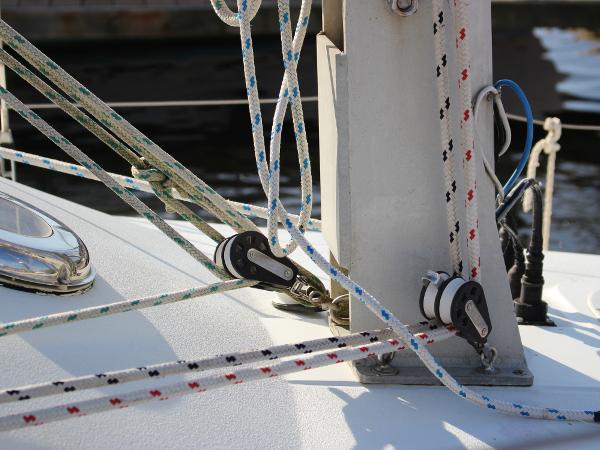
The difficulty arises when considering an upgrade or you're not entirely sure what you already have on board. At this point, the material to be used, the construction and the diameter of the rope all need to be considered. These factors have a significant influence on the overall cost and performance of your line. This guide aims to help you choose the right line at the right price.
Rope Materials
There are many more fibres available for the truly discerning sailor, however, this article sets out the 5 most common ones found in our product range.
Listed in order from most expensive to most economical, they are Vectran, Dyneema, Technora, Polyester and Polypropylene.
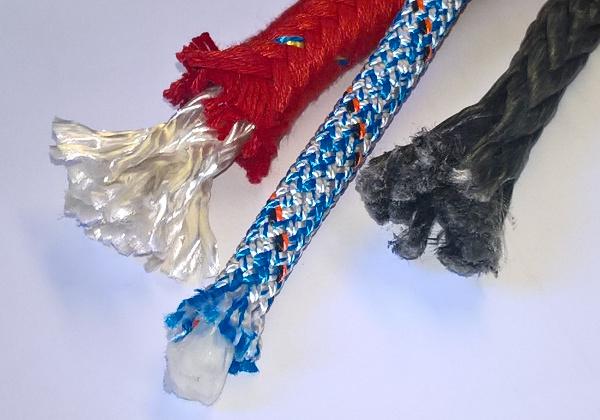
- Vectran is the strongest and most expensive fibre and has very low elongation over time (creep). It is commonly impregnated with a UV stabiliser.
- Dyneema is very nearly equal to Vectran in terms of strength and stretch and is also usually impregnated with a UV protective coating. The price advantage over Vectran makes this a popular choice with rope manufacturers at the upper end of the market.
- Technora has very high abrasion and UV resistance and is commonly blended into the cover/jacket of a braid on braid line.
- Polyester is the most common fibre with excellent UV resistance, good breaking strains and low stretch characteristics. It is available in a bright monofilament fibre and a softer, matt finish, spun yarn. Bright polyester fibres are low stretch e.g. braid on braid bright white polyester. The softer feel, spun yarn has less strength and is slightly stretchier. Spun yarn is typically used for the cover/jacket on e.g. 16 plait matt polyester.
- Polypropylene is the lightest (doesn't absorb water) and cheapest fibre. However, it is stretchy and susceptible to UV.
Rope manufacturers have traditionally used different fibres for the core and the cover, in order to make the most of their relative advantages, but can now produce even better ropes by blending different fibres together, in either the core or the jacket.
Rope Construction
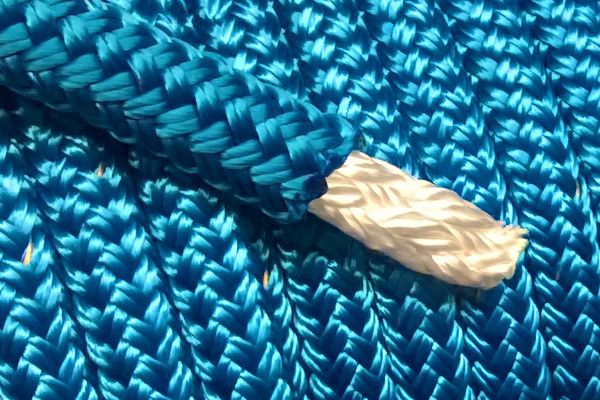
The majority of lines are comprised of a braided core and a braided jacket. The most common cruising lines are 100% polyester (cost effective). The weight of fibre in these lines is usually balanced equally between the cover and the core and can be spliced using the double braid splice.
Marlowbraid is the exception as it has a 3-strand core which slightly reduces stretch for a very modest increase in price. The downside of this construction is that it tends to flatten around sheaves and winches.
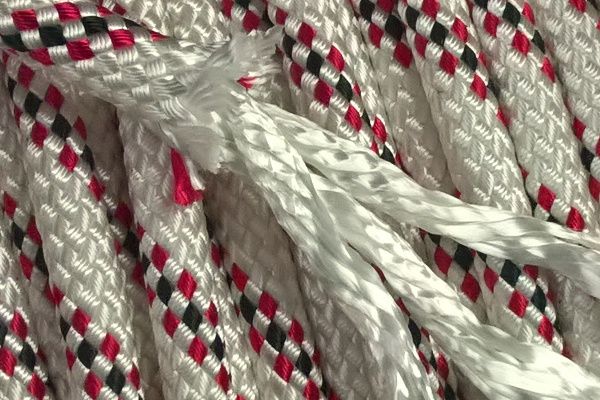
N.B. braided lines with a polypropylene core may make a saving but will be reflected in a marked lack of performance particularly with regard to extra stretch where it is not desirable.
The construction of the cover also has a bearing on abrasion resistance. Generally, the covers with a tighter weave or 'more plaits' e.g. 8, 16, 24 or 32 plaits offer a sliding scale of improved wear resistance.
Stronger fibres such as Dyneema or Vectran are required to significantly increase the strength of a line and reduce its stretch. Typically, these fibres are used in the core which is therefore much stronger than the cover. These lines then have to be spliced using the core dependent method which in turn means the weight of fibre in the cover can be reduced.
Cost vs Performance
The cost is directly related to the amount of Dyneema/Vectran content in the finished rope and therefore related to the strength and stretch.

It, therefore, follows that the strongest (and most expensive) line for a given diameter does not have a cover and is 100% 'core'. However, Halyards and sheets still rely on the cover for grip and abrasion resistance in clutches and on winches. The solution is to strip the cover from the core shortly after the winch or clutch. This can only be done with core dependent ropes.
All the fibres mentioned can be blended to produce covers with different properties. Racers may use a polypropylene/Dyneema blend for lightweight sheets or a technora/polyester blend for sheets that get through a lot of work. Cruisers are less likely to have sailing condition specific requirements, so a standard polyester cover heavy enough to give good longevity is usually the best bet.
Choose the right line
The full range of lines supplied by Jimmy Green Marine can cater for both the cruisers and the racers. So we have arranged the lines on a sliding scale to help you decide where to aim. Specifications are based on 12mm lines.
Whether you're a cruiser looking to strengthen up your lines for a more adventurous outing or a racer looking for a better price point Jimmy Green has a line for you.
| Line | Strength | Stretch | Cover Fibre | Cover construction | Core Fibre | Core construction |
|---|---|---|---|---|---|---|
| 2400kg | 5% | Spun Polyester | 16-plait | Polyester | Braided | |
| 3200kg | 5% | Polyester | 20-plait | Polyester | Braided | |
| 3500kg | 5% | Polyester | 1:1 | Polyester | Braided | |
| 4450kg | 4% | Polyester | 16-plait 1:1 | Polyester | 3-strand | |
| 4800kg | 2% | Polyester | high twist 32-plait | SK78/polyester | Braided with cover | |
| 5200kg | 2.5-3% | Polyester | 16-plait 1:1 | SK38 | Braided | |
| 6690kg | 1.5% | Polyester | 24-plait | SK78 | 12-strand | |
| 7200kg | 1.5% | Polyester | high twist 32-plait | SK78/polyester | Braided with cover | |
| 6690kg | 1.5% | Polyester/Technora | 24-plait | SK78 | 12-strand | |
| 112000kg | < 1% | Polyester/Technora | high twist 32-plait | SK99 | 12-strand |
You can also find further information on the infographic below. The stretch percentages are based on a 500kg working load rather than an ultimate breaking load. This accounts for the difference between the infographic and the table above.
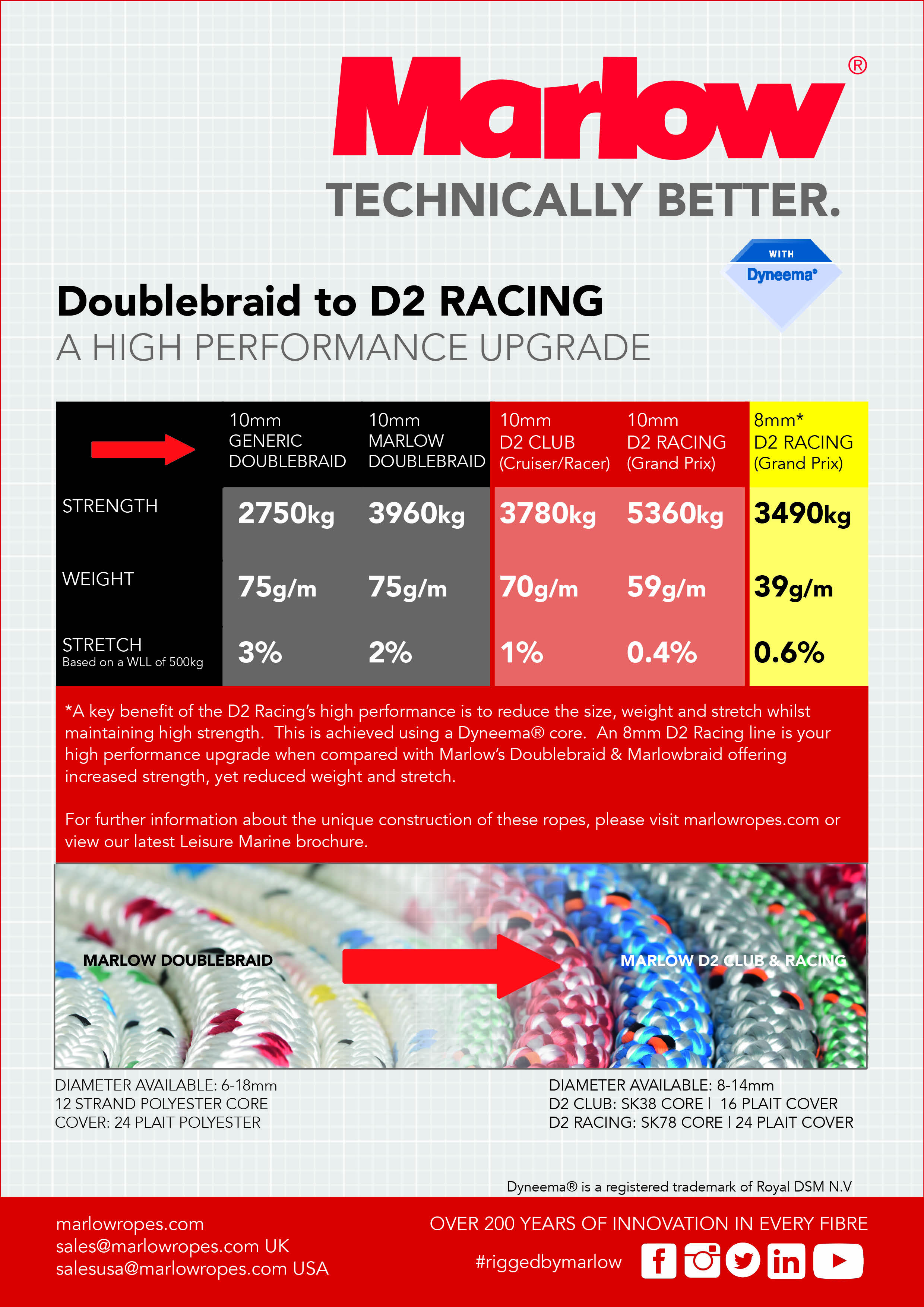
Shop for Sheets and Halyards
Related products
Liros 12mm dynamic plus dyneema - sheets, halyards, control lines, 10mm marlowbraid - sheets, halyards, control lines, 100 metre reel - marlowbraid, liros 14mm herkules - sheets, halyards, control lines, 50 metre cut length - liros classic matt plait polyester, author: jimmy green, you may also like.

Top 5 Sail Control Ropes

Ten tips to help you enjoy winter sailing.
Keyboard_arrow_left guide to tackling a complete re-rig, the decision-making checklist for buying anchor chain keyboard_arrow_right.
Sailboat Parts Explained: Illustrated Guide (with Diagrams)
When you first get into sailing, there are a lot of sailboat parts to learn. Scouting for a good guide to all the parts, I couldn't find any, so I wrote one myself.
Below, I'll go over each different sailboat part. And I mean each and every one of them. I'll walk you through them one by one, and explain each part's function. I've also made sure to add good illustrations and clear diagrams.
This article is a great reference for beginners and experienced sailors alike. It's a great starting point, but also a great reference manual. Let's kick off with a quick general overview of the different sailboat parts.
General Overview
The different segments
You can divide up a sailboat in four general segments. These segments are arbitrary (I made them up) but it will help us to understand the parts more quickly. Some are super straightforward and some have a bit more ninja names.
Something like that. You can see the different segments highlighted in this diagram below:

The hull is what most people would consider 'the boat'. It's the part that provides buoyancy and carries everything else: sails, masts, rigging, and so on. Without the hull, there would be no boat. The hull can be divided into different parts: deck, keel, cabin, waterline, bilge, bow, stern, rudder, and many more.
I'll show you those specific parts later on. First, let's move on to the mast.

Sailboats Explained
The mast is the long, standing pole holding the sails. It is typically placed just off-center of a sailboat (a little bit to the front) and gives the sailboat its characteristic shape. The mast is crucial for any sailboat: without a mast, any sailboat would become just a regular boat.
I think this segment speaks mostly for itself. Most modern sailboats you see will have two sails up, but they can carry a variety of other specialty sails. And there are all kinds of sail plans out there, which determine the amount and shape of sails that are used.
The Rigging
This is probably the most complex category of all of them.
Rigging is the means with which the sails are attached to the mast. The rigging consists of all kinds of lines, cables, spars, and hardware. It's the segment with the most different parts.
The most important parts
If you learn anything from this article, here are the most important parts of any sailboat. You will find all of these parts in some shape or form on almost any sailboat.

Okay, we now have a good starting point and a good basic understanding of the different sailboat parts. It's time for the good stuff. We're going to dive into each segment in detail.
Below, I'll go over them one by one, pointing out its different parts on a diagram, listing them with a brief explanation, and showing you examples as well.
After reading this article, you'll recognize every single sailboat part and know them by name. And if you forget one, you're free to look it up in this guide.

On this page:
The hull is the heart of the boat. It's what carries everything: the mast, the sails, the rigging, the passengers. The hull is what provides the sailboat with its buoyancy, allowing it to stay afloat.
Sailboats mostly use displacement hulls, which is a shape that displaces water when moving through it. They are generally very round and use buoyancy to support its own weight. These two characteristics make sure it is a smooth ride.
There are different hull shapes that work and handle differently. If you want to learn more about them, here's the Illustrated Guide to Boat Hull Types (with 11 Examples ). But for now, all we need to know is that the hull is the rounded, floating part of any sailboat.
Instead of simply calling the different sides of a hull front, back, left and right , we use different names in sailing. Let's take a look at them.

The bow is the front part of the hull. It's simply the nautical word for 'front'. It's the pointy bit that cuts through the water. The shape of the bow determines partially how the boat handles.
The stern is the back part of the hull. It's simply the nautical word for 'back'. The shape of the stern partially determines the stability and speed of the boat. With motorboats, the stern lies deep inside the water, and the hull is flatter aft. Aft also means back. This allows it to plane, increasing the hull speed. For sailboats, stability is much more important, so the hull is rounded throughout, increasing its buoyancy and hydrodynamic properties.
The transom is the backplate of the boat's hull. It's the most aft (rear) part of the boat.
Port is the left side of a sailboat.
Starboard is the right side of a sailboat
The bilges are the part where the bottom and the sides of the hull meet. On sailboats, these are typically very round, which helps with hydrodynamics. On powerboats, they tend to have an angle.
The waterline is the point where the boat's hull meets the water. Generally, boat owners paint the waterline and use antifouling paint below it, to protect it from marine growth.
The deck is the top part of the boat's hull. In a way, it's the cap of the boat, and it holds the deck hardware and rigging.
Displacement hulls are very round and smooth, which makes them very efficient and comfortable. But it also makes them very easy to capsize: think of a canoe, for example.
The keel is a large fin that offsets the tendency to capsize by providing counterbalance. Typically, the keel carries ballast in the tip, creating a counterweight to the wind's force on the sails.
The rudder is the horizontal plate at the back of the boat that is used to steer by setting a course and maintaining it. It is connected to the helm or tiller.
Tiller or Helm
- The helm is simply the nautical term for the wheel.
- The tiller is simply the nautical term for the steering stick.
The tiller or helm is attached to the rudder and is used to steer the boat. Most smaller sailboats (below 30') have a tiller, most larger sailboats use a helm. Large ocean-going vessels tend to have two helms.
The cockpit is the recessed part in the deck where the helmsman sits or stands. It tends to have some benches. It houses the outside navigation and systems interfaces, like the compass, chartplotter, and so on. It also houses the mainsheet traveler and winches for the jib. Most boats are set up so that the entire vessel can be operated from the cockpit (hence the name). More on those different parts later.
Most larger boats have some sort of roofed part, which is called the cabin. The cabin is used as a shelter, and on cruising sailboats you'll find the galley for cooking, a bed, bath room, and so on.
The mast is the pole on a sailboat that holds the sails. Sailboats can have one or multiple masts, depending on the mast configuration. Most sailboats have only one or two masts. Three masts or more is less common.
The boom is the horizontal pole on the mast, that holds the mainsail in place.
The sails seem simple, but actually consist of many moving parts. The parts I list below work for most modern sailboats - I mean 90% of them. However, there are all sorts of specialty sails that are not included here, to keep things concise.

The mainsail is the largest sail on the largest mast. Most sailboats use a sloop rigging (just one mast with one bermuda mainsail). In that case, the main is easy to recognize. With other rig types, it gets more difficult, since there can be multiple tall masts and large sails.
If you want to take a look at the different sail plans and rig types that are out there, I suggest reading my previous guide on how to recognize any sailboat here (opens in new tab).
Sail sides:
- Leech - Leech is the name for the back side of the sail, running from the top to the bottom.
- Luff - Luff is the name for the front side of the sail, running from the top to the bottom.
- Foot - Foot is the name for the lower side of the sail, where it meets the boom.
Sail corners:
- Clew - The clew is the lower aft (back) corner of the mainsail, where the leech is connected to the foot. The clew is attached to the boom.
- Tack - The tack is the lower front corner of the mainsail
- Head - The head is the top corner of the mainsail
Battens are horizontal sail reinforcers that flatten and stiffen the sail.
Telltales are small strings that show you whether your sail trim is correct. You'll find telltales on both your jib and mainsail.
The jib is the standard sized headsail on a Bermuda Sloop rig (which is the sail plan most modern sailboats use).
As I mentioned: there are all kinds, types, and shapes of sails. For an overview of the most common sail types, check out my Guide on Sail Types here (with photos).
The rigging is what is used to attach your sails and mast to your boat. Rigging, in other words, mostly consists of all kinds of lines. Lines are just another word for ropes. Come to think of it, sailors really find all kinds of ways to complicate the word rope ...
Two types of rigging
There are two types of rigging: running and standing rigging. The difference between the two is very simple.
- The running rigging is the rigging on a sailboat that's used to operate the sails. For example, the halyard, which is used to lower and heave the mainsail.
- The standing rigging is the rigging that is used to support the mast and sail plan.
Standing Rigging

Here are the different parts that belong to the standing rigging:
- Forestay or Headstay - Line or cable that supports the mast and is attached to the bow of the boat. This is often a steel cable.
- Backstay - Line or cable that supports the mast and is attached to the stern of the boat. This is often a steel cable.
- Sidestay or Shroud - Line or cable that supports the mast from the sides of the boat. Most sailboats use at least two sidestays (one on each side).
- Spreader - The sidestays are spaced to steer clear from the mast using spreaders.
Running Rigging: different words for rope
Ropes play a big part in sailing, and especially in control over the sails. In sailboat jargon, we call ropes 'lines'. But there are some lines with a specific function that have a different name. I think this makes it easier to communicate with your crew: you don't have to define which line you mean. Instead, you simply shout 'mainsheet!'. Yeah, that works.
Running rigging consists of the lines, sheets, and hardware that are used to control, raise, lower, shape and manipulate the sails on a sailboat. Rigging varies for different rig types, but since most sailboats are use a sloop rig, nearly all sailboats use the following running rigging:

- Halyards -'Halyard' is simply the nautical name for lines or ropes that are used to raise and lower the mainsail. The halyard is attached to the top of the mainsail sheet, or the gaffer, which is a top spar that attaches to the mainsail. You'll find halyards on both the mainsail and jib.
- Sheets - 'Sheet' is simply the nautical term for lines or ropes that are used to set the angle of the sail.
- Mainsheet - The line, or sheet, that is used to set the angle of the mainsail. The mainsheet is attached to the Mainsheet traveler. More on that under hardware.
- Jib Sheet - The jib mostly comes with two sheets: one on each side of the mast. This prevents you from having to loosen your sheet, throwing it around the other side of the mast, and tightening it. The jib sheets are often controlled using winches (more on that under hardware).
- Cleats are small on-deck hooks that can be used to tie down sheets and lines after trimming them.
- Reefing lines - Lines that run through the mainsail, used to put a reef in the main.
- The Boom Topping Lift is a line that is attached to the aft (back) end of the boom and runs to the top of the mast. It supports the boom whenever you take down the mainsail.
- The Boom Vang is a line that places downward tension on the boom.
There are some more tensioning lines, but I'll leave them for now. I could probably do an entire guide on the different sheets on a sailboat. Who knows, perhaps I'll write it.
This is a new segment, that I didn't mention before. It's a bit of an odd duck, so I threw all sorts of stuff into this category. But they are just as important as all the other parts. Your hardware consists of cleats, winches, traveler and so on. If you don't know what all of this means, no worries: neither did I. Below, you'll find a complete overview of the different parts.
Deck Hardware

Just a brief mention of the different deck hardware parts:
- Pulpits are fenced platforms on the sailboat's stern and bow, which is why they are called the bow pulpit and stern pulpit here. They typically have a solid steel framing for safety.
- Stanchons are the standing poles supporting the lifeline , which combined for a sort of fencing around the sailboat's deck. On most sailboats, steel and steel cables are used for the stanchons and lifelines.
Mainsheet Traveler
The mainsheet traveler is a rail in the cockpit that is used to control the mainsheet. It helps to lock the mainsheet in place, fixing the mainsails angle to the wind.

If you're interested in learning more about how to use the mainsheet traveler, Matej has written a great list of tips for using your mainsheet traveler the right way . It's a good starting point for beginners.
Winches are mechanical or electronic spools that are used to easily trim lines and sheets. Most sailboats use winches to control the jib sheets. Modern large sailing yachts use electronic winches for nearly all lines. This makes it incredibly easy to trim your lines.

You'll find the compass typically in the cockpit. It's the most old-skool navigation tool out there, but I'm convinced it's also one of the most reliable. In any way, it definitely is the most solid backup navigator you can get for the money.

Want to learn how to use a compass quickly and reliably? It's easy. Just read my step-by-step beginner guide on How To Use a Compass (opens in new tab .
Chartplotter
Most sailboats nowadays use, besides a compass and a map, a chartplotter. Chartplotters are GPS devices that show a map and a course. It's very similar to your normal car navigation.

Outboard motor
Most sailboats have some sort of motor to help out when there's just the slightest breeze. These engines aren't very big or powerful, and most sailboats up to 32' use an outboard motor. You'll find these at the back of the boat.

Most sailboats carry 1 - 3 anchors: one bow anchor (the main one) and two stern anchors. The last two are optional and are mostly used by bluewater cruisers.

I hope this was helpful, and that you've gained a good understanding of the different parts involved in sailing. I wanted to write a good walk-through instead of overwhelming you with lists and lists of nautical terms. I hope I've succeeded. If so, I appreciate any comments and tips below.
I've tried to be as comprehensive as possible, without getting into the real nitty gritty. That would make for a gigantic article. However, if you feel I've left something out that really should be in here, please let me know in the comments below, so I can update the article.
I own a small 20 foot yacht called a Red witch made locally back in the 70s here in Western Australia i found your article great and enjoyed reading it i know it will be a great help for me in my future leaning to sail regards John.
David Gardner
İ think this is a good explanation of the difference between a ”rope” and a ”line”:
Rope is unemployed cordage. In other words, when it is in a coil and has not been assigned a job, it is just a rope.
On the other hand, when you prepare a rope for a specific task, it becomes employed and is a line. The line is labeled by the job it performs; for example, anchor line, dock line, fender line, etc.
Hey Mr. Buckles
I am taking on new crew to race with me on my Flying Scot (19ft dingy). I find your Sailboat Parts Explained to be clear and concise. I believe it will help my new crew learn the language that we use on the boat quickly without being overwhelmed.
PS: my grandparents were from Friesland and emigrated to America.
Thank you Shawn for the well written, clear and easy to digest introductory article. Just after reading this first article I feel excited and ready to set sails and go!! LOL!! Cheers! Daniel.
steve Balog
well done, chap
Great intro. However, the overview diagram misidentifies the cockpit location. The cockpit is located aft of the helm. Your diagram points to a location to the fore of the helm.
William Thompson-Ambrose
An excellent introduction to the basic anatomy and function of the sailboat. Anyone who wants to start sailing should consider the above article before stepping aboard! Thank-you
James Huskisson
Thanks for you efforts mate. We’ve all got to start somewhere. Thanks for sharing. Hoping to my first yacht. 25ft Holland. Would love to cross the Bass Strait one day to Tasmania. 👌 Cheers mate
Alan Alexander Percy
thankyou ijust aquired my first sailboat at 66yrs of age its down at pelican point a beautifull place in virginia usa my sailboat is a redwing 30 if you are ever in the area i wouldnt mind your guidance and superior knowledge of how to sail but iam sure your fantastic article will help my sailboat is wings 30 ft
Thanks for quick refresher course. Having sailed in California for 20+ years I now live in Spain where I have to take a spanish exam for a sailboat license. Problem is, it’s only in spanish. So a lot to learn for an old guy like me.
Very comprehensive, thank you
Your article really brought all the pieces together for me today. I have been adventuring my first sailing voyage for 2 months from the Carolinas and am now in Eleuthera waiting on weather to make the Exumas!!! Great job and thanks
Helen Ballard
I’ve at last found something of an adventure to have in sailing, so I’m starting at the basics, I have done a little sailing but need more despite being over 60 life in the old dog etc, thanks for your information 😊
Barbara Scott
I don’t have a sailboat, neither do l plan to literally take to the waters. But for mental exercise, l have decided to take to sailing in my Bermuda sloop, learning what it takes to become a good sailor and run a tight ship, even if it’s just imaginary. Thank you for helping me on my journey to countless adventures and misadventures, just to keep it out of the doldrums! (I’m a 69 year old African American female who have rediscovered why l enjoyed reading The Adventures of Robert Louis Stevenson as well as his captivating description of sea, wind, sailboat,and sailor).
Great article and very good information source for a beginner like me. But I didn’t find out what I had hoped to, which is, what are all those noisy bits of kit on top of the mast? I know the one with the arrow is a weather vane, but the rest? Many thanks, Jay.
Louis Cohen
The main halyard is attached to the head of the mainsail, not the to the mainsheet. In the USA, we say gaff, not gaffer. The gaff often has its own halyard separate from the main halyard.
Other than that it’s a nice article with good diagrams.
A Girl Who Has an Open Sail Dream
Wow! That was a lot of great detail! Thank you, this is going to help me a lot on my project!
Hi, good info, do u know a book that explains all the systems on a candc 27,
Leave a comment
You may also like, guide to understanding sail rig types (with pictures).
There are a lot of different sail rig types and it can be difficult to remember what's what. So I've come up with a system. Let me explain it in this article.

The Ultimate Guide to Sail Types and Rigs (with Pictures)

The Illustrated Guide To Boat Hull Types (11 Examples)

How To Live On a Boat For Free: How I'd Do It

How To Live on a Sailboat: Consider These 5 Things
- New Sailboats
- Sailboats 21-30ft
- Sailboats 31-35ft
- Sailboats 36-40ft
- Sailboats Over 40ft
- Sailboats Under 21feet
- used_sailboats
- Apps and Computer Programs
- Communications
- Fishfinders
- Handheld Electronics
- Plotters MFDS Rradar
- Wind, Speed & Depth Instruments
- Anchoring Mooring
- Running Rigging
- Sails Canvas
- Standing Rigging
- Diesel Engines
- Off Grid Energy
- Cleaning Waxing
- DIY Projects
- Repair, Tools & Materials
- Spare Parts
- Tools & Gadgets
- Cabin Comfort
- Ventilation
- Footwear Apparel
- Foul Weather Gear
- Mailport & PS Advisor
- Inside Practical Sailor Blog
- Activate My Web Access
- Reset Password
- Customer Service

- Free Newsletter

Catalina 270 vs. The Beneteau First 265 Used Boat Match-Up

Ericson 41 Used Boat Review

Mason 33 Used Boat Review

Beneteau 311, Catalina 310 and Hunter 326 Used Boat Comparison

Tips From A First “Sail” on the ICW

Tillerpilot Tips and Safety Cautions

Best Crimpers and Strippers for Fixing Marine Electrical Connectors


Thinking Through a Solar Power Installation

Polyester vs. Nylon Rode

Getting the Most Out of Older Sails

How (Not) to Tie Your Boat to a Dock

Stopping Mainsheet Twist

Fuel Lift Pump: Easy DIY Diesel Fuel System Diagnostic and Repair

Ensuring Safe Shorepower

Sinking? Check Your Stuffing Box

The Rain Catcher’s Guide

What Do You Do With Old Fiberglass Boats?

Boat Repairs for the Technically Illiterate

Boat Maintenance for the Technically Illiterate: Part 1

Whats the Best Way to Restore Clear Plastic Windows?

Giving Bugs the Big Goodbye

Galley Gadgets for the Cruising Sailor

Those Extras you Don’t Need But Love to Have

What’s the Best Sunscreen?

UV Clothing: Is It Worth the Hype?

Preparing Yourself for Solo Sailing

How to Select Crew for a Passage or Delivery

R. Tucker Thompson Tall Ship Youth Voyage

On Watch: This 60-Year-Old Hinckley Pilot 35 is Also a Working…

On Watch: America’s Cup

On Watch: All Eyes on Europe Sail Racing

Dear Readers
- Sails, Rigging & Deck Gear
Practical Sailors Guide to Choosing Cost-Efficient Halyard Materials
Practical sailor testers evaluate the many cordage choices available for both furling sail halyards and conventional sail halyards, with a look at the different rope fibers out there and a specific focus on cost vs. line stretch..

Sail performance is directly affected by the type and condition of your halyards. Upgrading your halyards to a low-stretch fiber helps ensure youre getting the sails full power, and it can add life your sails. After testing a sampling of lines from New England Ropes, Novatech Braids, Samson Rope, and Yale Cordage, Practical Sailor found that line stretch decreases significantly as cost increases. And while the very-low- to no-stretch high-tech lines often come with through-the-roof prices, there are low-stretch halyard options available for the budget-minded sailor. This article offers a line cost vs. line stretch analysis and an overview of the fibers available. UV resistance and other factors like abrasion resistance and ease of splicing will be the subject of future tests on these halyard materials.
****
While considerable development continues in the realm of high-tech, high-budget halyards, cruising sailors and club racers face a variety of choices but few new products since our last comprehensive halyard comparison (“For All-Rope Halyards, Its Hard to Beat New England Ropes Sta-Set,” December 1997). One recent addition to the range is VPC, from New England Ropes, which brings the low-stretch, low-creep characteristics of Vectran into an affordable upgrade from polyester double braid. Creep is a fibers taffy-like gradual elongation over time while under a static tensile load, and given how most sailors today are relying on at least one permanently hoisted sail, this factor will likely come into play.
Over the last decade or so, the large production-boat builders have found that more than 80 percent of new-boat buyers are choosing in-mast furling mainsails on boats 30 feet and longer. These boats all have roller-furling headsails, too, so the selection of halyard material is simplified somewhat: The halyards for these sails are rarely handled, so “hand” becomes a less-important quality to consider.
Another attribute, though, becomes more important: durability under load. The working end of the halyard spends its life under tension, bent around a sheave at the masthead. Because the sail remains aloft indefinitely, the halyard is rarely inspected, and must be trusted to perform without supervision throughout a season, or longer, if the boat is sailed year-round. All of these lines, except the Amsteel, have polyester covers, so one can expect similar service lives.
For sailors who have conventional sails and use the halyards on a regular basis, hand remains important. So too does the lines willingness to run free without snagging. And these sailors have plenty of opportunities to inspect the line for wear at its critical points.
Clutch slippage is also a factor. In last years rope clutch test (“ Clutch Play ,” April 2006), we used three of the halyards featured in this comparison. Subjected to 400-pound loads in two of our preferred clutches, the Lewmar D2 (the easiest to bleed) and the Spinlock XAS (the best gripping), Yales Vizzion proved to hold the best (average slippage 3/8-inch), followed by Samson Warpspeed (13/32-inch) and New England Ropes Sta-Set (7/16-inch). We will be looking at all these halyards clutch performance in a future test.
Regardless of sail type or deck gear, one factor always affects the choice of line for any halyard, and that is stretch. When the goal is to get the best performance out of a sail, its halyard should stretch as little as possible when it comes under additional load from a freshening breeze or sailing closer to the wind. When a halyard stretches, it allows the sail fabric to move aft. The draft of the sail moves with it. This results in the driving force rotating aft, creating more heeling moment and more weather helm. The boat is sailing less efficiently than it could, and you may be forced to reef earlier than you otherwise would.
As its fabric pulls aft, a sail on a mast track will scallop between the slides, and horizontal wrinkles will form at the slides. Apart from looking unseamanlike and making life less pleasant aboard, this also puts uneven stress on the sail fabric, which could&emdash;depending on how much sailing you do under these conditions&emdash;shorten its useful life.
So, heres another reason to renew your halyards, and perhaps even upgrade them: to save wear and tear on your sails.
Ironically, a cruising-boat owners budget is often expended on comforts and electronics, while the sails, which one would suppose are the boats reason for existing in the first place, get short shrift. When it finally comes time to specify the halyards and running rigging, the pot is empty. Ultimately, for the sake of a hundred dollars saved on a halyard, the owner never sees the full performance he paid for in his new sail.
For an average boat in the mid-30-foot range, a new mainsail can cost from $2,000 upward, and the premium for a “performance” mainsail over a basic Dacron model starts at about $500. Anyone investing that much would be well advised to hoist it on a halyard that does it justice. For about $100 over the cost of a basic polyester double braid, halyard stretch can be reduced by 75 percent, and the sail will be better able to deliver its promised performance.
By the same token, if you have an aging sail thats rather stretchy along the luff, you could eke another season or two out of it while you save up for a new one by spending a couple of hundred dollars on a less stretchy halyard. The halyard you bought will still be good for the new sail a few years down the road.
Another benefit of a low-stretch halyard is that it reduces effort in the cockpit. Trim-conscious sailors will find they have to make fewer adjustments to the halyard to keep the draft where they want it.
How We Tested
For this article, we looked exclusively at the cost/stretch aspect of new halyards. The Stretch to Cost Table on page 14 shows quite dramatically how great the benefit is for an additional investment that is really quite small, relative to the cost of a new sail. While we specifically looked at a main halyard, the results apply equally to a jib halyard for the same reasons.
For our comparison, to keep the math simple, our hypothetical test boat was somewhere around 35 feet, with a mainsail luff length of 40 feet. Running the halyard back to the cockpit, we assumed 50 feet of line between the winch and the head of the fully hoisted sail. Again for simplicity, we assumed a halyard load of 1,000 pounds, which is a reasonable maximum to expect the mainsail to exert on it&emdash;after that, its time to reef. (Once reefed, stretch resistance becomes even more important on a conventional sail, because the exposed halyard is now longer by the depth of the reef. When a luff-furling sail is reefed, adjusting halyard tension is pointless.)
For each sample of cordage we examined, we took the manufacturer-supplied stretch characteristics and calculated the stretch in inches that would result from our 1,000-pound load acting on the 50-foot standing part of the halyard. To simplify the pricing, we assumed buying 100 feet of line to provide an ample tail in the cockpit and enough extra length to allow “freshening the nip” a few times over the halyards life.
Our baseline rope was double-braid polyester, 7/16-inch in diameter. This kept our assumed 1,000-pound load at no more than 15 percent of the lines average breaking strength. A smaller diameter would probably suffice in the real world, but it would stretch more, precisely the opposite of what were trying to achieve.
The resulting graph of inches of stretch plotted against cost produced a dramatic curve, from which its quite obvious that the first $100 you spend over the basic polyester double-braid halyard buys a significant reduction in stretch. We should note that the values used for stretch are interpolated from data provided by the manufacturers in their literature or on their websites. While they may not be precise, we are confident that they reliably illustrate the argument. We intend to do our own testing on all of these lines, including stretch, to be reported on in a future issue.
The prices used in the graph are the lowest prices we found for each product. While researching these, we were reminded of how important it is to shop around. The price sources we used, and they are by no means exhaustive, appear in the “PS Value Guide Halyards” at left.
Learning the Ropes
The fibers commonly used in the products we studied are polyester, ultra-high-molecular weight polyethyline (UHMPE, sometimes written UHMWPE), para-aramids, and liquid-crystal polyester polyarylate (LCP). Polyolefin (polypropylene) is also used to add bulk to some fiber combinations.
This side of the Atlantic, polyester is usually known by its Dupont trade name, Dacron. It is inexpensive (relatively), has good tensile strength, and resists degradation by UV light, but it has a low Youngs Modulus (meaning, its stretchy). Compared to 7×19 stainless-steel wire, which was commonly used in the past for halyards, its very stretchy.
UHMPE comes under two common brand names, Spectra and Dyneema. Each of these has variants, but thats beyond the scope of this article. UHMPE has high strength and low stretch, which in combination with its generally good resistance to UV makes it well suited to halyards.
Para-aramids include Kevlar, Technora, and Twaron, variations on a molecular theme from different manufacturers. They exhibit similar strength to UHMPE at a lower price, but the trade-off is theyre not totally happy bending, they don’t perform well under abrasion, and they don’t stand up to sunlight as well. In sailing applications, they are usually found protected by a covering of some sort, except when they are the protection&emdash;against the heat generated when highly loaded lines are blown off a winch.
Vectran is the only LCP found in marine rope. It has high strength, low stretch, and better abrasion resistance than the para-aramids. It is far less susceptible to creep that UHMPE, and for that reason, it is useful when under standing loads. It, too, needs protection from UV.
Polyolefin, sometimes listed as MFP, is an inexpensive fiber used to bulk up small volumes of high-tech fibers to increase diameter and improve “hand.” It is basically polypropylene, and used by itself, appears in ski-tow ropes and on life-saving equipment. Its light, and it floats, but it doesn’t stand up to UV light.
Plotting Price vs. Stretch
Plotting cost against stretch using the same 1,000-pound load on a range of ropes produces a very clear picture of what youre buying. (For loads other than our 1,000 pounds, scaling up or down should produce the same relationship between stretch and cost.) You can almost halve the stretch by simply upgrading from 7/16-inch Sta-Set to the same size in Sta-Set X. Going up another level (see rope list) halves the stretch again, even with a reduction to 3/8-inch diameter to reduce cost. As stretch approaches zero, cost goes through the roof, but thats of little consequence even to the serious club racer, because several choices lie within a reasonable price point.
One way to use the graph would be to pick a maximum cost youd be comfortable with and look at the individual plots to the left of that number. Youll find that some of them are higher-tenacity material at smaller diameters. We figured 5/16-inch (8 millimeters) is as small as is comfortable to handle. Depending on your boats current winches, rope clutches, and sheaves, these may not work for you.
We included one single-braid line, Amsteel, simply for comparison. If youre tempted to go that route, you should consult a rigger about covering it so that it can lock properly in stoppers.
UV resistance and other factors like abrasion resistance and ease of splicing will be the subject of future tests on these halyard materials.
Conclusions
When it comes to making your decision, you will have to take into account factors beyond dollars and stretch&emdash;nothings simple. And until we do further testing, any definitive recommendations would be premature. Nonetheless, using the accompanying tables you should be able to find a good halyard that best meets your requirements and budget.
First: What size and type of line do you currently have? If this is original equipment, the entire halyard system may have been designed around it, from the masthead sheaves to the turning blocks at the base of the mast, to the clutch on the cabin top. Before electing to go down a size, or even two, in line diameter, you need to be sure this wont trigger a cascade of modifications necessary to accommodate it.
If you had wire, you will have to change the masthead sheaves to suit any synthetic line (and those sheaves are probably due for replacement anyway). Sheaves grooved for wire will make short work of a synthetic replacement. The higher high-tech lines, such as the 12-strand, single-braid Dyneema or Spectra (Amsteel, for example), work best under high loads in a sheave with a flatter-profile groove. The line flattens, reducing the difference in tension between the inner and outer fibers. Double-braid lines, which are the most suited to cruisers and casual racers anyway, are less fussy.
Going down a size in diameter will help your halyard systems efficiency by reducing internal friction as it turns around the now relatively larger sheaves. Most rope manufacturers specify a sheave-to-line-diameter ratio of 8:1 for optimal performance, but you rarely see this in many production-boat setups.
Going down two sizes, from 7/16-inch to 5/16-inch, will certainly get you into the high-tech material within your budget, but you may not get the stretch savings you hoped for. Also, you may find your stoppers wont accommodate the line.
Check the range of sizes your clutch or stopper will handle. If it will accommodate a size smaller than your present halyard, you can move up to a higher tenacity fiber core for better performance and down in diameter, and still gain the low-stretch advantage.
If you have permanently hoisted sails, you might want to look at a low-creep fiber for the halyards. This usually means a Vectran blend, and therefore more expense, but you wont suffer from gradual loss in luff tension as the season goes by. Because your sail is either all the way up or off the boat, the fall of the halyard, the part that would be hung on the mast or wherever when the sail is up, doesn’t have to be high-tech. A good rigger will be able to combine a single-braid standing part with a cover-only tail, saving both weight aloft and money.
Make sure you make both the tail and standing part long enough to permit freshening the nip a few times. Where the halyard sits on the masthead sheave, it will wear, and it will be exposed to ultraviolet (UV) light. Regular inspection, and cutting off and replacing the splice once in a while should prevent an untimely failure.
All of the lines discussed here can be spliced, but their differing constructions will dictate just what type of splice to use. Splice required is listed in the Value Guide, with additional information available on the manufacturers websites. Most of the suppliers also offer splicing services, and depending on line size and splice complexity, $15 to $30 seems like a bargain when measured against frustration most of us part-time riggers will suffer should we attempt the job ourselves.
- Practical Sailor Halyard Lines Value Guide
- Stretching Dollars
- Splice-Ability
RELATED ARTICLES MORE FROM AUTHOR

Working with High-Tech Ropes
So why is the plot of price vs. strech included?
Where are the “accompanying tables” ?
To Karen- The tables are in the Also With this Article links at the bottom. To Darrell- Your pricing guide is really out of date. APS does not exist anymore. Hall Spars does not appear to sell line. DR Marine does not sell Portland Braid. The prices seem way out of date. Novabraid Polyspec was extremely hard to find online which raises concerns about it. I found it from The Chandlery Online for $1.69/ft.
LEAVE A REPLY Cancel reply
Log in to leave a comment
Latest Videos
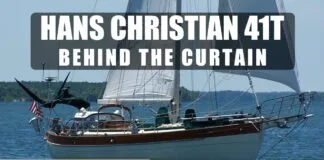
Hans Christian 41T – Boat Review

Seven dead after superyacht sinks off Sicily. Was the crew at...

What’s the Best Sailboats for Beginners?

Why Does A Sailboat Keel Fall Off?
Latest sailboat review.

- Privacy Policy
- Do Not Sell My Personal Information
- Online Account Activation
- Privacy Manager
- Types of Sailboats
- Parts of a Sailboat
- Cruising Boats
- Small Sailboats
- Design Basics
- Sailboats under 30'
- Sailboats 30'-35
- Sailboats 35'-40'
- Sailboats 40'-45'
- Sailboats 45'-50'
- Sailboats 50'-55'
- Sailboats over 55'
- Masts & Spars
- Knots, Bends & Hitches
- The 12v Energy Equation
- Electronics & Instrumentation
- Build Your Own Boat
- Buying a Used Boat
- Choosing Accessories
- Living on a Boat
- Cruising Offshore
- Sailing in the Caribbean
- Anchoring Skills
- Sailing Authors & Their Writings
- Mary's Journal
- Nautical Terms
- Cruising Sailboats for Sale
- List your Boat for Sale Here!
- Used Sailing Equipment for Sale
- Sell Your Unwanted Gear
- Sailing eBooks: Download them here!
- Your Sailboats
- Your Sailing Stories
- Your Fishing Stories
- Advertising
- What's New?
- Chartering a Sailboat
- Running Rigging
Sailboat Rigging: Part 2 - Running Rigging
Sailboat rigging can be described as being either running rigging which is adjustable and controls the sails - or standing rigging, which fixed and is there to support the mast. And there's a huge amount of it on the average cruising boat...
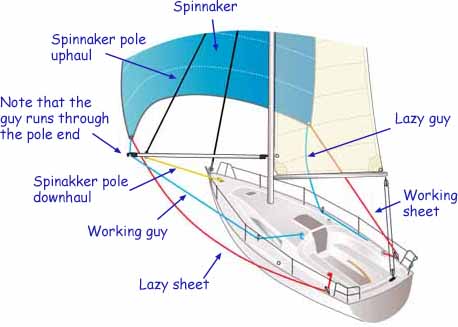
- Port and starboard sheets for the jib, plus two more for the staysail (in the case of a cutter rig) plus a halyard for each - that's 6 separate lines;
- In the case of a cutter you'll need port and starboard runners - that's 2 more;
- A jib furling line - 1 more;
- An up-haul, down-haul and a guy for the whisker pole - 3 more;
- A tackline, sheet and halyard for the cruising chute if you have one - another 3;
- A mainsheet, halyard, kicker, clew outhaul, topping lift and probably three reefing pennants for the mainsail (unless you have an in-mast or in-boom furling system) - 8 more.
Total? 23 separate lines for a cutter-rigged boat, 18 for a sloop. Either way, that's a lot of string for setting and trimming the sails.
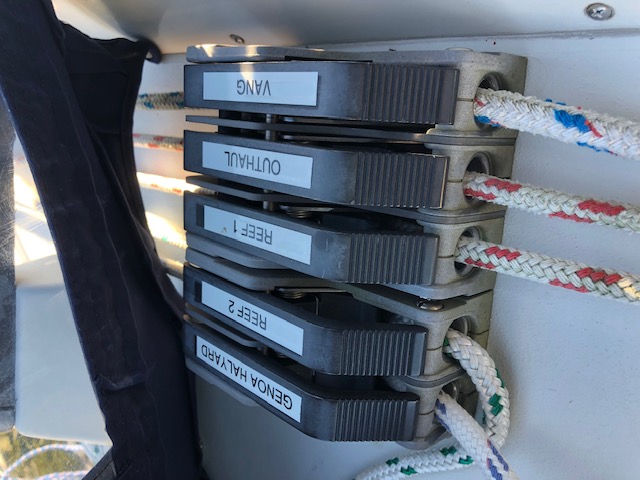
Many skippers prefer to have all running rigging brought back to the cockpit - clearly a safer option than having to operate halyards and reefing lines at the mast. The downside is that the turning blocks at the mast cause friction and associated wear and tear on the lines.
The Essential Properties of Lines for Running Rigging
It's often under high load, so it needs to have a high tensile strength and minimal stretch.
It will run around blocks, be secured in jammers and self-tailing winches and be wrapped around cleats, so good chafe resistance is essential.
Finally it needs to be kind to the hands so a soft pliable line will be much more pleasant to use than a hard rough one.
Not all running rigging is highly stressed of course; lines for headsail roller reefing and mainsail furling systems are comparatively lightly loaded, as are mainsail jiffy reefing pennants, single-line reefing systems and lazy jacks .
But a fully cranked-up sail puts its halyard under enormous load. Any stretch in the halyard would allow the sail to sag and loose its shape.
It used to be that wire halyards with spliced-on rope tails to ease handling were the only way of providing the necessary stress/strain properties for halyards.
Thankfully those days are astern of us - running rigging has moved on a great deal in recent years, as have the winches, jammers and other hardware associated with it.
Modern Materials
Ropes made from modern hi-tech fibres such as Spectra or Dyneema are as strong as wire, lighter than polyester ropes and are virtually stretch free. It's only the core that is made from the hi-tech material; the outer covering is abrasion and UV resistant braided polyester.
But there are a few issues with them:~
- They don't like being bent through a tight radius. A bowline or any other knot will reduce their strength significantly;
- For the same reason, sheaves must have a diameter of at least eight times the diameter of the line;
- Splicing securely to shackles or other rigging hardware is difficult to achieve, as it's slippery stuff. Best to get these done by a professional rigger...
- As you may have guessed, it's expensive stuff!
My approach on Alacazam is to use Dyneema cored line for all applications that are under load for long periods of time - the jib halyard, staysail halyard, main halyard, spinnaker halyard, kicking strap and checkstays - and pre-stretched polyester braid-on-braid line for all other running rigging applications.
Approximate Line Diameters for Running Rigging
But note the word 'approximate'. More precise diameters can only be determined when additional data regarding line material, sail areas, boat type and safety factors are taken into consideration.
Length of boat
Spinnaker guys
Boom Vang and preventers
Spinnaker sheet
Genoa sheet
Main halyard
Genoa / Jib halyard
Spinnaker halyard
Pole uphaul
Pole downhaul
Reefing pennants
Lengthwise it will of course depend on the layout of the boat, the height of the mast and whether it's a fractional or masthead rig - and if you want to bring everything back to the cockpit...
Read more about Reefing and Sail Handling...
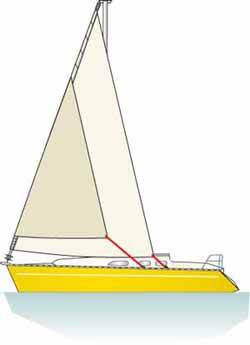
Headsail Roller Reefing Systems Can Jam If Not Set Up Correctly
When headsail roller reefing systems jam there's usually just one reason for it. This is what it is, and here's how to prevent it from happening...
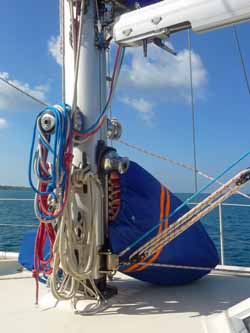
Single Line Reefing; the Simplest Way to Pull a Slab in the Mainsail
Before going to the expense of installing an in-mast or in-boom mainsail roller reefing systems, you should take a look at the simple, dependable and inexpensive single line reefing system
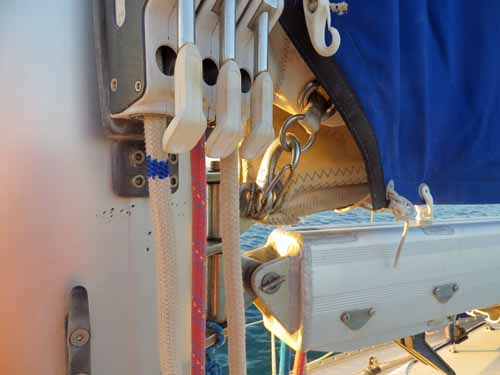
Is Jiffy Reefing the simplest way to reef your boat's mainsail?
Nothing beats the jiffy reefing system for simplicity and reliability. It may have lost some of its popularity due to expensive in mast and in boom reefing systems, but it still works!
Recent Articles
Pearson 33 for sale
Sep 04, 24 03:29 PM
Apla 42 Sailboat Specs & Key Performance Indicators
Aug 30, 24 02:51 AM
Ovni 445 Sailboat Specs & Key Performance Indicators
Aug 29, 24 03:44 AM
Here's where to:
- Find Used Sailboats for Sale...
- Find Used Sailing Gear for Sale...
- List your Sailboat for Sale...
- List your Used Sailing Gear...
Our eBooks...

A few of our Most Popular Pages...

Copyright © 2024 Dick McClary Sailboat-Cruising.com
Not All Line is Equal: How to Choose the Right Line for the Job
March 6, 2018
With the wide array of rope available today and continuous technological advances in line design, deciding on the best rope for each use can be baffling. Use this guide to ensure you choose the right rope for each application.
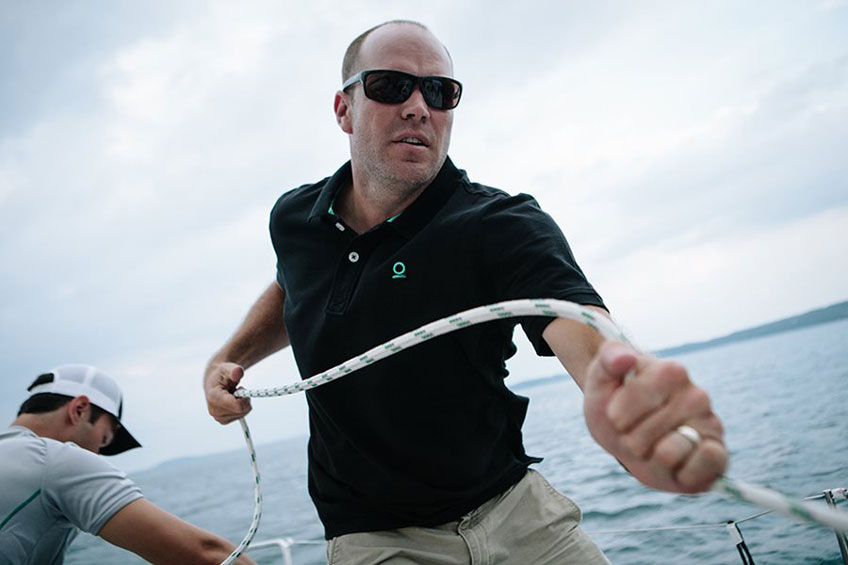
Using the proper line for each use isn’t just important for performance; it’s also important for keeping your sails safe. Break a sheet or lose a halyard while sailing, and you’ll likely find yourself breaking out your onboard sail repair kit or ending the race and heading to the loft for repairs. Our service team details what you need to know about the line options available, how they’re made, and how to choose the right one. At Quantum, we’re big fans of New England Ropes . They make a great product and have an option for just about every sailor and type of sailing. All of our examples and recommendations below are from the New England Ropes collection.
COMMON ROPE FIBER
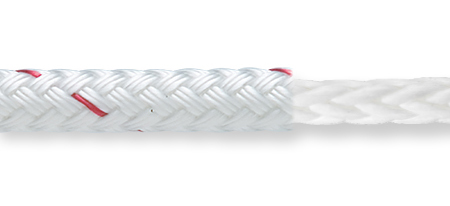
POLYESTER (PET)
- PROS: Polyester is a great option for applications that require strength, durability, and low stretch. PET is moderately priced, and there are lots of colors available.
- CONS: Polyester is low stretch, but it does stretches a lot compared to it's higher priced cousins, both initially and over time. It is heavy, and absorbs water easily. PET has poor abrasion resistance and a fairly low break strength compared to the diameter. The strength of the line relies on both the outer cover and inner core. When either of those loses strength or has an abrasion, the overall strength of the line is reduced.
- EXAMPLE: Sta-Set
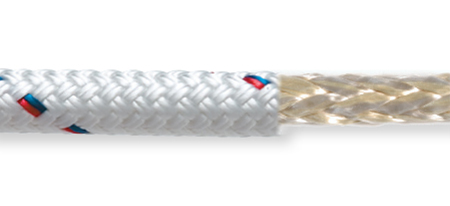
Aramid (Technora®, Twaron®, Kevlar®)
- PROS: Aramid is a popular low stretch material with great heat resistance and strength.
- CONS: Aramid has a low UV resistance and does not bend around sharp edges well.
- EXAMPLE: T-900
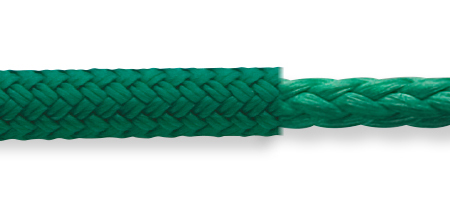
Liquid Crystal Polymer (Vectran®)
- PROS: Vectran® is an extremely low stretch material with a very high breaking strength, and it is the only line with zero creep. Vectran® also has high heat resistance. Overall, it is lightweight and doesn’t absorb water. The cover can be stripped for weight saving. Vectran® comes in a selection of colors.
- CONS: Vectran® does not have great durability or high UV resistance. Stripping the cover is not recommended and will weaken the durability of the line. Vectran® doesn’t do well with sharp corner bends, so care must be taken with small sheaves and tight turns. Vectran® also has a high price point.
- EXAMPLE: V-100
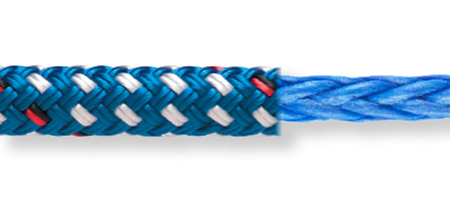
HMPE (Spectra®, Dyneema ® )
- PROS: Dyneema® has strong heat resistance, excellent stretch resistance, and excellent break strength. It has the lowest stretch at the break strength of all synthetic fibers. Overall, it is lightweight, and the cover can be stripped for weight-saving. Dyneema® offers color and vendor options.
- CONS: Dyneema® permanently creeps over time. It also has a high price point.
- EXAMPLE: Endura Braid
CHOOSING THE RIGHT LINE
In determining your rope priorities, start out by considering the type of sailing you’ll be doing.
If you’re cruising on a budget, choose line with great durability and UV resistance. If treated well, polyester braids for all or most applications are a good option. With the high-load applications associated with larger cruising vessels, such as sheets and halyards, you’ll need line that can handle a heavier load than polyester braids can. A blended double braid Beltran® or Spectra® rope is a better option than polyester braids for these high-load applications.
For club racing, ensure that the line has the proper break strength on higher load applications. Use a blended braid Vectran® or Spectra® line for the halyards, jib sheets, and guys. Avoid using polyester for these high-load applications so that you don’t have to get extra-large diameters. Polyester can be used in control lines and other lower load lines.
In Grand Prix racing, just about all of the line on the boat should be stretch resistant with a strong breaking point. Spectra®- or Vectran®-based rope is a great option for this. Many high-quality constructions of Spectra® are being made. New covers are even being made out of Spectra® and Technora®, which adds greater grip around winches and reduces abrasion to practically zero. If you’re stripping the cover on some of these lines to reduce weight, only do so on spinnaker sheets, spinnaker halyards, and other control lines where the load or use is low.
If a brand new high-load, low-stretch line is purchased for a given application, it’s a good idea to check the fittings it is running through. When ball bearings are missing, a winch or sheave doesn’t spin like it should. You hear odd noises, elongation occurs, and it’s probably time to replace or repair the deck fitting. If any fiberglass cracking or “spider webs” are appearing on deck fittings, it is a good idea to check the deck around the fitting and possibly reinforce the deck if any lamination issues have occurred.
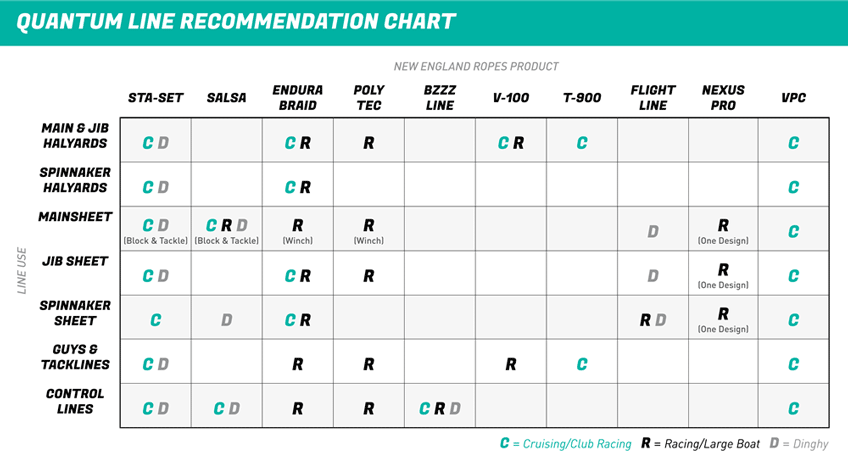
Main Halyard and Jib/Genoa Halyard
- PRIORITIES: Very low stretch and high break strength.
- DESIRABLE: Light weight to reduce weight aloft.
- IDEAL TYPES: Spectra® or Vectran® core with a spectra chafe cover close to the shackle. With the added chafe cover at the shackle, it’s nearly impossible for the sheave to tear the halyard.
- RECOMMENDED LINE: Endura Braid , V-100 , VPC , T-900
Spinnaker Halyard
- PRIORITIES: A high break point is essential. Low stretch is important, but not as necessary as it is for other halyards.
- DESIRABLE: Light weight to reduce weight aloft.
- IDEAL TYPES: Spectra with a chafe cover near the shackle. Spectra is a low stretch rope that handles the shock loads from the spinnaker well. The cover of the rope can be removed from a portion of the halyard that doesn’t reach the winch.
- RECOMMENDED LINE: Endura Braid
Mainsheet
- PRIORITIES : Dependent on system used. On a multi-purchase system, Spectra® or polyester single braids are great options. They are strong ropes and great for grip. On a winch system, low stretch and high break strength is desirable, making Spectra double braid the best option. On a block-and-tackle purchase system, some stretch in the line is okay due to low loads per each purchase. A comfortable feel on the hands is necessary.
- Block and Tackle: Salsa Line , Sta-Set , Nexus Pro
- Winch: Endura Braid , Poly Tec
Jib/Genoa Sheet
- PRIORITIES: Low stretch and high break strength is essential.
- TOP CHOICE: Spectra core with a high-tech cover. A high-tech material resists abrasion from winches and blocks.
- RECOMMENDED LINE: Poly Tec , Endura Braid
Spinnaker Sheet
- PRIORITIES: Very lightweight rope is essential, especially for lighter air. Lines that float are a great option because they don’t add extra weight from moisture absorption.
- DESIRABLE: Low stretch and high break strength.
- IDEAL TYPES: Spectra core with a polyester cover. The cover can be removed from a portion of the line that doesn’t go through blocks and winches. This keeps the line light and reduces water absorption.
- RECOMMENDED LINE: Endura Braid , Nexus Pro , Flight Line
Guys and Tacklines
- IDEAL TYPE: Spectra or Vectran core with a polyester cover; add a chafe cover near the shackle. The chafe cover resists chafe and abrasion from the sprit or pole end.
Control Lines
- PRIORITIES: Depends on the application. Most control lines don’t see much use or load, so having stretchy and low break load lines is usually ok.
- DESIRABLE: Since most control lines are pulled manually, having a comfortable feel on the hands can be helpful.
- IDEAL TYPE: Spectra or polyester. Spectra can be used if wanting to remove the cover for weight reduction. Polyester is a great choice for lower load applications.
- RECOMMENDED LINE: Sta-Set , Endura Braid , Bzzz Line
"Dinghy and small boat mainsheet trimmers and helmsmen all choose New England Ropes Buzz Line." ©New England Ropes
Endura Braid
"Endura Braid delivers optimal performance, strength and durability for the competitive sailor. It features a specially engineered 12-strand Dyneema® core, with marine-tech coating and a 24 carrier braided polyester cover." ©New England Ropes
Flight Line
"A lightweight line perfect for light air spinnaker sheets, as well as mainsheets and control lines in smaller boats." ©New England Ropes
"Designed for today's newest one design sheets and control lines. Perfect for boats that require high tensile such as J70, Etchells, Melges, J24, and larger one-design products." ©New England Ropes
"An ideal balance of Technora® fiber and polyester and engineered to the demanding standards of riggers worldwide." ©New England Ropes
"Salsa Line from New England Ropes is an excellent main sheet for one design keelboats and large dinghies." ©New England Ropes.
"The number one polyester double braid on the market. Sta-Set is the quintessential proven performance double braid." ©New England Ropes
"A low stretch and low creep halyard option. T-900 features our pioneering blend of Dyneema® and Technora® in its core with a durable polyester jacket." ©New England Ropes
"V-100 features a braided 100% Vectran® 12-strand single braid core treated with our unique marine-tech coating with a highly durable and attractive polyester cover." ©New England Ropes
"The ultimate in high load performance. V-100 features a braided 100% Vectran® 12-strand single braid core treated with our unique marine-tech coating with a highly durable and attractive polyester cover." ©New England Ropes
The Discussion
I’m looking for the best line for a centerboard pendant. Top priority is good abrasion resistance. Second would be low stretch and strength.
This website uses cookies and collects usage statistics. Privacy Policy
Us, too. We pour that passion into each of our newsletters to help you enjoy sailing even more.
Selecting Rope – Length, Diameter, Type
Published by rigworks on july 10, 2019.
Question : Do you have guidelines for selecting halyards, sheets, etc. for my sailboat?
From the Rigger : First, if your old rope served its purpose but needs replacing, we recommend duplicating it as closely as possible to ensure that the replacement is the correct length and works with your existing clutches, winches, etc. The best bet is to shop with your old rope in hand. If you need to replace a halyard, please don’t pull it out of the mast. We would be happy to loan you a tagline (strong and thin) to use as a ‘place holder’, or we are always happy to visit your boat and tag it out for you.
When buying new running rigging (i.e. rope), you will want to consider length, diameter, stretch/performance, material/construction and, of course, price. Below are some rough guidelines to help you make an educated purchase. These guidelines are particularly useful when estimating the cost of a project. Then we can help you fine-tune your rope selection and length before cutting.
Guidelines for Rope Length:
- Main Halyard – Mast length x 2.5
- Genoa Halyard – Mast length x 2.5
- Genoa Halyard (fractional rig) – Mast length x 2
- Spinnaker / gennaker halyard – Mast length x 2.5
- Main Sheet – Boat length x 2.5 (varies with the mechanical purchase being used)
- Genoa Sheet – Boat length x 1 to 1.5
- Spinnaker Sheet / Guy – Boat length x 2
- Asymmetric Spinnaker Sheet – Boat length x 2.5 to 3
Control Lines:
- Outhaul – Boom length x 2
- Boom Vang – Boom length x 2
- Cunningham – Boom length x 1
- Reefing Line (reef 1) – Boom length x 2.5
- Reefing Line (reef 2) – Boom length x 3
If your running rigging leads back to the cockpit, remember to account for that in your length. And if in doubt, too long is always better than too short!
Guidelines for Rope Diameter and Type:
Diameter and performance are determined by your boat length, the function of the rope, and the style of sailing that you do. For example, low stretch is very important in a halyard but not necessarily in a sheet. A high-performance racer might require a lighter, stronger, lower stretch (i.e. more expensive!) rope than a cruiser. There is no ‘one-size-fits-all’ with running rigging.
Taking into account boat length and sailing style, the attached chart suggests rope diameter and type for each piece of running rigging: Rope Diameter and Type
We have a huge rope wall at Rigworks and are very proud of our selection and expertise. We are happy to help you pick the best rope for your application. So, with or without your old rope in hand, stop by and chat with our staff. We always look forward to seeing you!
Related Posts
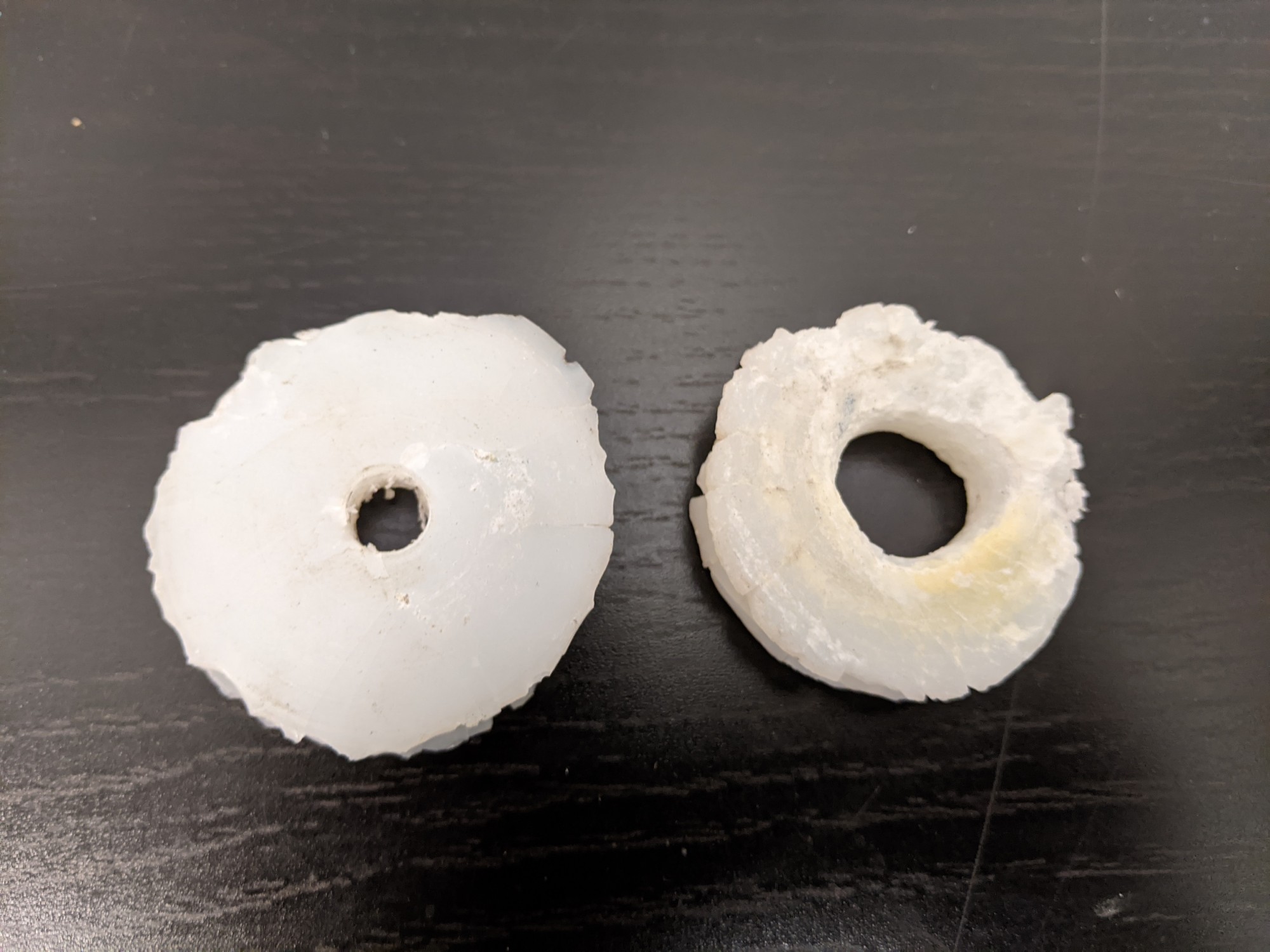
Ask the Rigger
Do your masthead sheaves need replacing.
Question: My halyard is binding. What’s up? From the Rigger: Most boat owners do not climb their masts regularly, but our riggers spend a lot of time up there. And they often find badly damaged Read more…
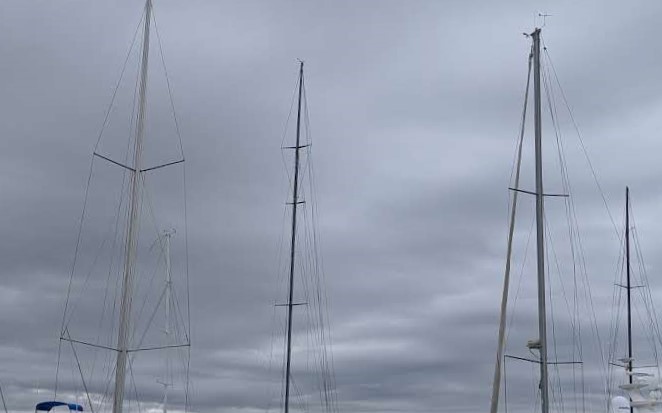
Standing Rigging (or ‘Name That Stay’)
Question: When your riggers talk about standing rigging, they often use terms I don’t recognize. Can you break it down for me? From the Rigger: Let’s play ‘Name that Stay’… Forestay (1 or HS) – Read more…
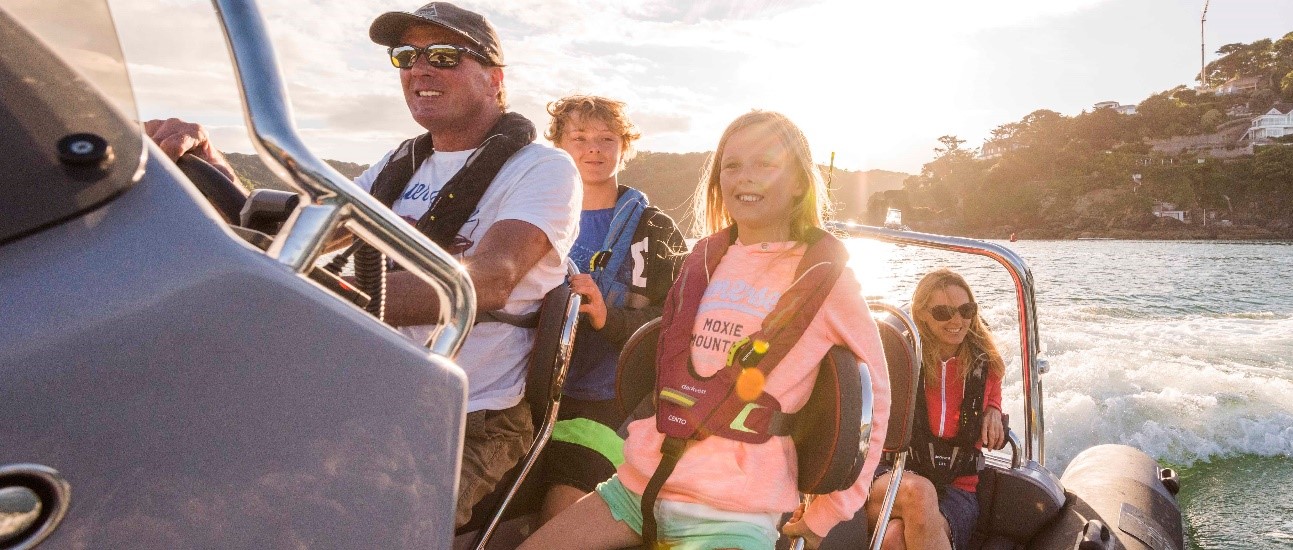
Spinlock Deckvest Maintenance
Question: What can I do to ensure that my Spinlock Deckvest is well-maintained and ready for the upcoming season? From the Rigger: We are so glad you asked! Deckvests need to be maintained so that Read more…

What Type Of Line Is Best For Halyards
- July 14, 2023
Table of Contents
Sail shape plays a crucial role in the performance of a sailboat, and one of the key factors affecting sail shape is the halyard line. This article explores the importance of selecting the best line for for halyards on a sailboat and delves into how halyard stretch can impact sail shape and overall performance. We will discuss various types of lines suitable for sailboat halyards and provide insights into how their characteristics affect sail shape. Understanding these dynamics will help sailors make informed decisions when choosing halyard lines for their sailboats.
Popular Types of Lines for Sailboat Halyards
The durable and low-stretch properties of polyester make it a popular choice for halyard lines. Its resistance to UV rays and grip in winches and cleats make it easy to handle, and it is available in various diameters and strengths to suit different sailboat sizes and applications.
Dyneema/Spectra
High-performance synthetic fibers like Dyneema and Spectra offer exceptional strength-to-weight ratios and minimal stretch. These lines are ideal for halyards due to their low stretch properties, UV resistance, and abrasion resistance. Although they may be more expensive than polyester, their superior performance makes them attractive options for performance-oriented sailboats.
Technora is another high-performance fiber known for its strength and heat resistance. It shares similar properties to Dyneema and Spectra but offers enhanced heat resistance. Technora halyards are commonly used in racing applications where high loads and extreme conditions are expected.
Vectran is a liquid crystal polymer fiber with high strength and low stretch characteristics. It is resistant to UV radiation and abrasion, making it suitable for halyards. Vectran lines provide good handling and are often favored for performance-oriented sailboats.
The Impact of Using Low-Quality Line For Halyards
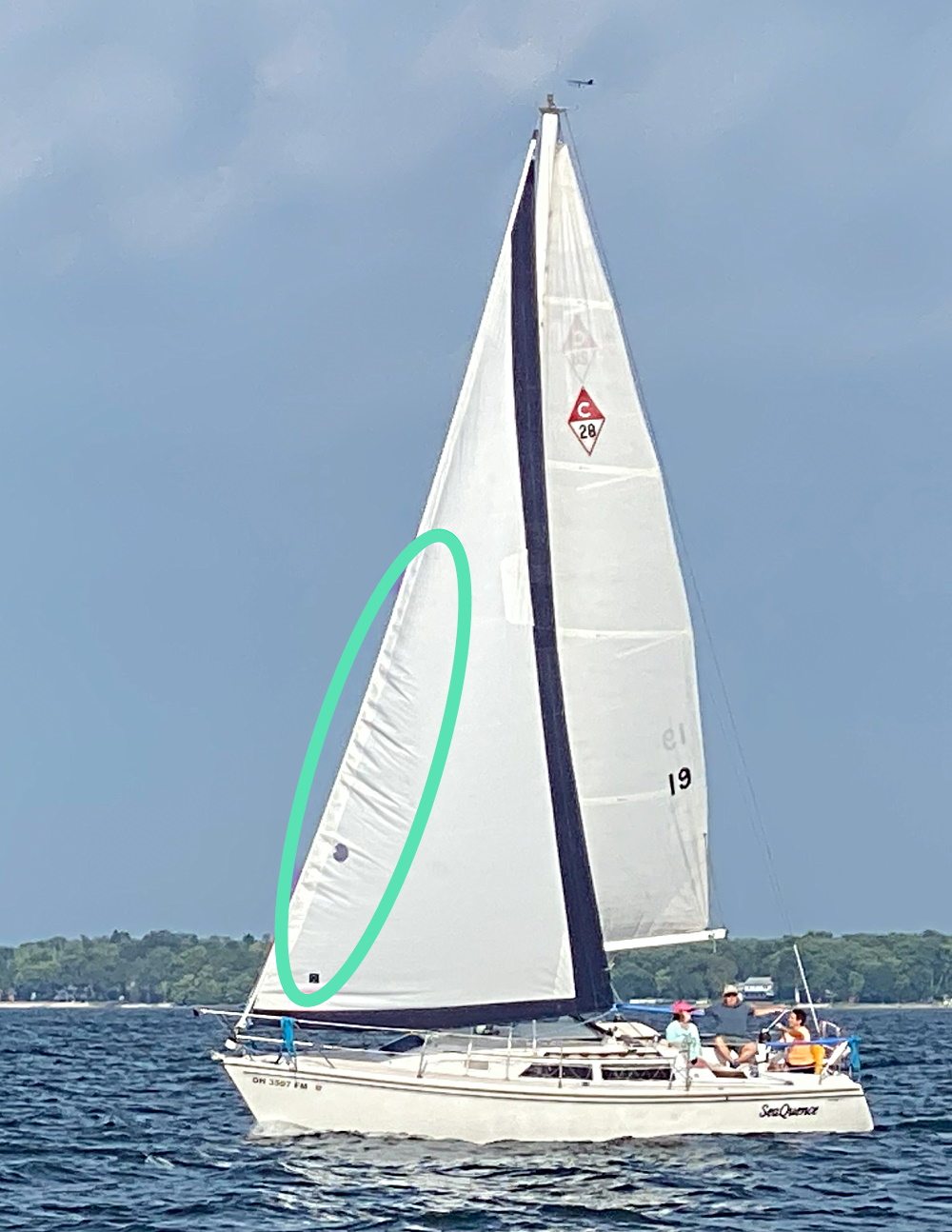
Halyard stretch allows the sail’s luff to move upward, resulting in luff sag or belly. This sagging disrupts the designed sail shape and reduces its efficiency. Properly tensioned halyards are crucial for maintaining the desired curvature of the sail’s leading edge, ensuring optimal performance.
Draft Position
Halyard stretch can shift the position of the sail’s draft, which is the maximum curvature or belly of the sail. As the halyard stretches, the tension on the luff decreases, causing the draft to move higher on the sail. This change in draft position can affect the balance and performance of the sail, leading to reduced speed and pointing ability.
Halyard tension plays a significant role in controlling the amount of twist in the sail. Stretching halyards can reduce tension on the luff, leading to excessive twist in the upper part of the sail. Excessive twist can result in power loss, reduced control, and an unbalanced sail plan.
Sail Control and Trim
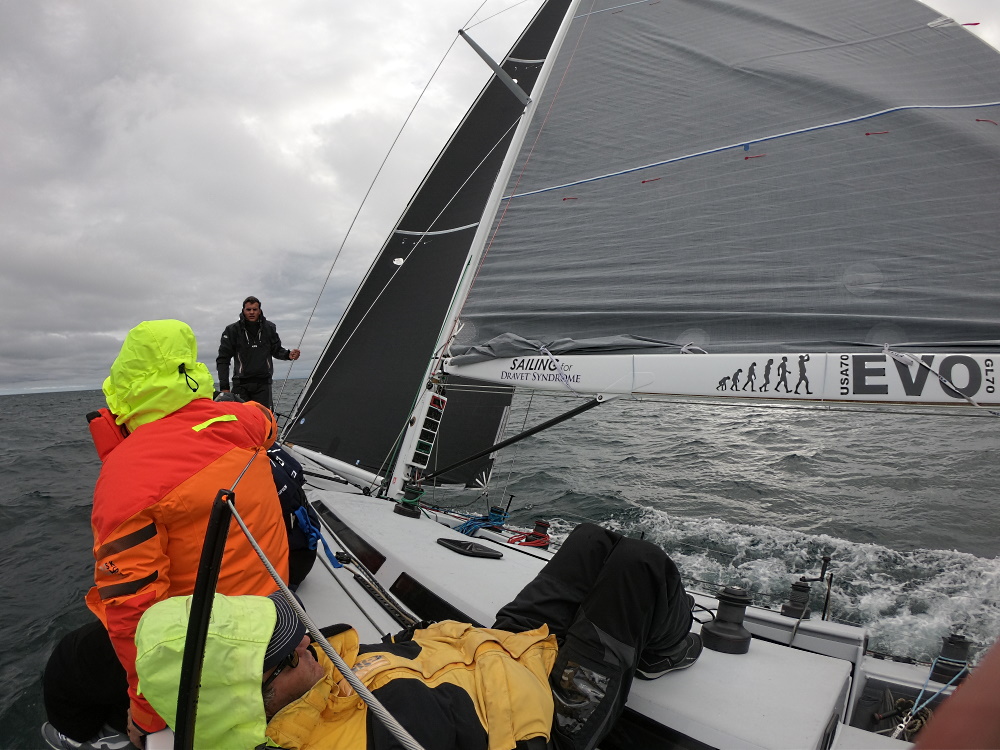
Selecting the Best Line for Halyards
Considerations.
When choosing halyard lines, factors such as load-bearing capacity, low stretch, durability, handling, and weight must be taken into account. The line should have sufficient strength to handle the expected loads without excessive stretching or risk of failure. Low-stretch lines help maintain proper sail shape, while durability ensures longevity and resistance to UV radiation, saltwater, and abrasion.
Recommendations
Lines made of polyester, Dyneema, Spectra, Technora, or Vectran are commonly used for sailboat halyards. Polyester lines offer good all-around performance and affordability. High-performance fibers like Dyneema, Spectra, Technora, and Vectran provide excellent strength, low stretch, and increased performance, albeit at a higher cost. The choice depends on the specific requirements, sailing style, and budget of the sailor.
Sailboat Halyard Line Diameter Guide
The following is a general guideline for sailboat lengths and the associated halyard line diameter:
- Sailboat Length: Up to 20 feet – Halyard Line Diameter: 3/16″ to 5/16″ (4-8 mm)
- Sailboat Length: 20-25 feet – Halyard Line Diameter: 5/16″ to 3/8″ (8-10 mm)
- Sailboat Length: 25-30 feet – Halyard Line Diameter: 3/8″ to 7/16″ (10-11 mm)
- Sailboat Length: 30-35 feet – Halyard Line Diameter: 7/16″ to 1/2″ (11-13 mm)
- Sailboat Length: 35-40 feet – Halyard Line Diameter: 1/2″ to 9/16″ (13-14 mm)
- Sailboat Length: 40-45 feet – Halyard Line Diameter: 9/16″ to 5/8″ (14-16 mm)
- Sailboat Length: 45-50 feet – Halyard Line Diameter: 5/8″ to 3/4″ (16-19 mm)
- Sailboat Length: 50-60 feet – Halyard Line Diameter: 3/4″ to 7/8″ (19-22 mm)
- Sailboat Length: 60+ feet – Halyard Line Diameter: 7/8″ and above (22 mm and above)
Best Line To Purchase For Halyards

New England Ropes 5/16″ (8mm) Endura Braid

New England Ropes 3/8in (10mm) Endura Braid

New England Ropes 1/2in (11mm)

New England Ropes 1/2in (12mm) Sta-Set

New England Ropes 9/16in (14mm) Sta-Set
Please note that these recommendations are approximate and can vary depending on factors such as boat design, anticipated loads, sailing conditions, and personal preferences. It’s important to consult with the sailboat manufacturer, riggers, or experienced sailors to determine the specific halyard line diameter recommendations for your sailboat based on its specifications and intended use.
Seeking Expert Advice
Consulting with sailmakers, riggers, or experienced sailors can provide valuable insights into selecting the right line for halyards. These professionals can offer tailored recommendations based on the sailboat’s specifications, intended use, and sailing conditions.
Choosing the right line for sailboat halyards is crucial to ensure optimal sail shape and performance. Halyard stretch can significantly impact sail shape, leading to reduced efficiency, power loss, and compromised sailing capabilities. Polyester, Dyneema, Spectra, Technora, and Vectran are popular choices for halyard lines, each offering distinct advantages in terms of strength, stretch resistance, durability, and handling.
Understanding the characteristics of these lines and their effects on sail shape empowers sailors to make informed decisions when selecting halyard lines for their sailboats. Regular maintenance, including checking and adjusting halyard tension, is essential to minimize the impact of halyard stretch and maintain proper sail shape. Seeking advice from professionals in the sailing community can further enhance the decision-making process.
By choosing the right line for sailboat halyards, sailors can optimize sail performance, maintain efficient sail trim, and enjoy a smoother and more enjoyable sailing experience.
The Sailor’s Marketplace for Sailboats and Sails.
Sell Your Sailboat
Sailboats for sale.
- New Sailboats
- Used Sailboats
- Cruising Sailboats
- Racing Sailboats
Sell Your Sails
Sails for sail, sail manufacturers.
- North Sails
- Quantum Sails
- Doyle Sails
- UK Sailmakers
Sailing Reviews
- Sailing Line
- Safety Equipment
- Sailing Accesories
As an Amazon Associate SailTrader earns from qualifying purchases.
This website uses cookies to ensure you get the best experience possible.
High School and College Sailors - 15% Off Apparel & Accessories - LEARN MORE

- Call Us +1-503-285-5536
- Sign in & Register
- Recently Viewed
Line for Sheets
Sheets control trim of sailboat sails such as the mainsail, jib, and spinnaker. Browse top line recommendations for sailboat mainsheets, jib sheets, spinnaker sheets, and more. Check out performance favorites such as Dinghy Sheet XL, Rooster Polilite, Coppa 500, and Samson Ultra-Lite and reliable options such as Marlow Double Braid and Orion 300. Whether you need a new Laser mainsheet, spinnaker sheets for your cruising boat, or jibsheets for your sportboat, we offer a selection of the industry's best sailing line from top brands you can trust.
- Qty in Cart

10mm Marlow D2 Racing

8mm Marlow D2 Racing

8mm New England Ropes Sta-Set

10mm Marlow Blue Ocean Doublebraid

8mm Marlow Blue Ocean Doublebraid

9mm Robline Racing Pro
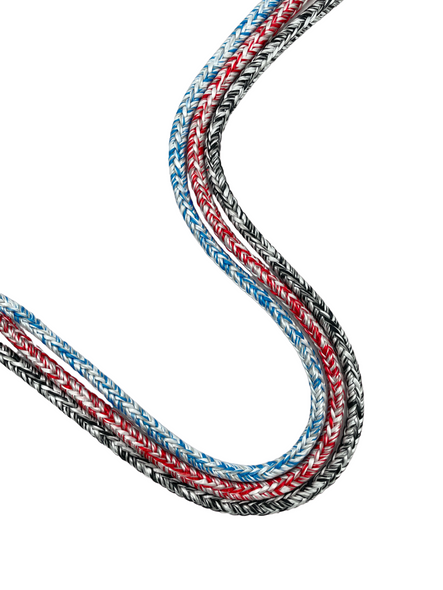
7mm Robline Racing Pro

8mm Marlow Excel Fusion
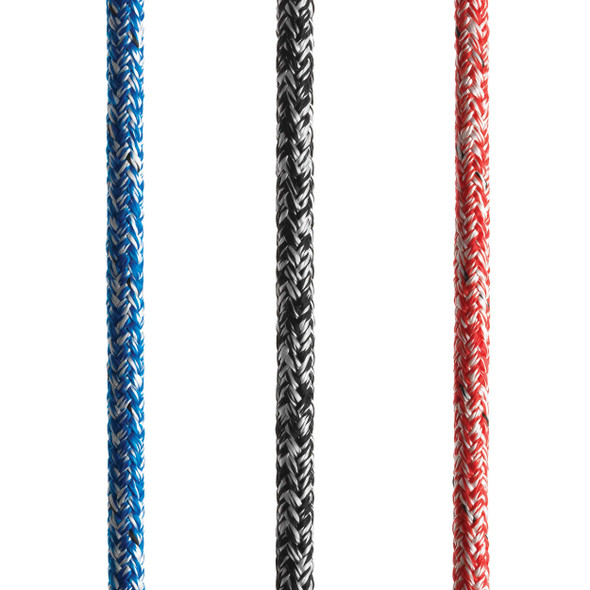
7mm Marlow Excel Fusion
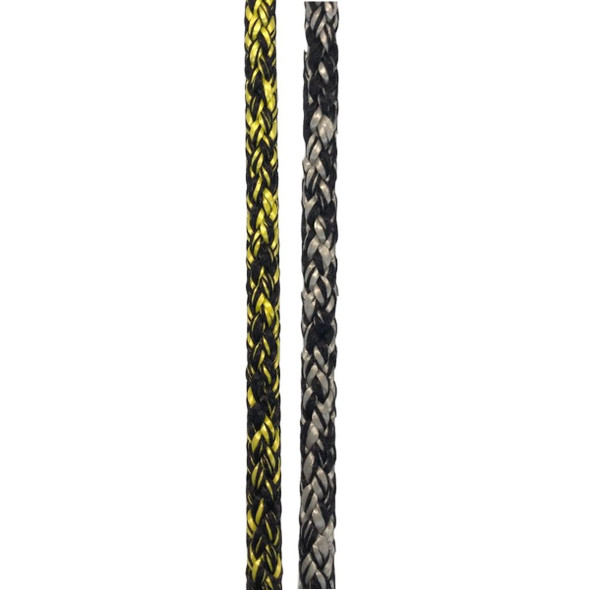
8mm Maffioli Swiftcord

7mm Maffioli Swiftcord

6mm Maffioli Swiftcord
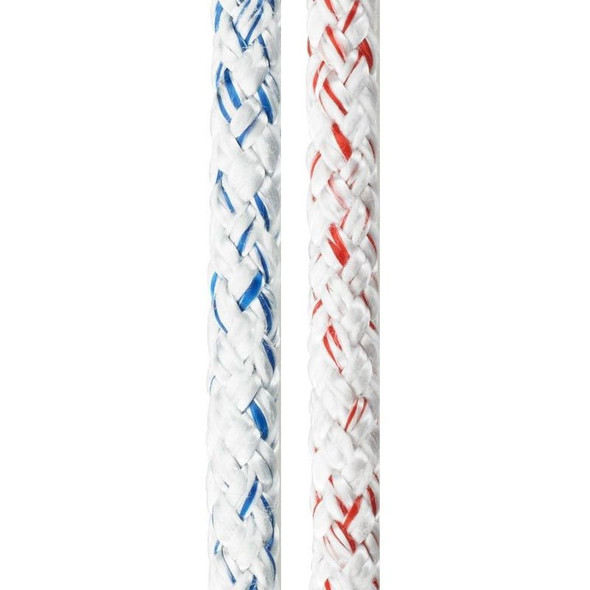
7mm New England Ropes Nexus Pro

10mm Kingfisher Matte Polyester

8mm Kingfisher Matte Polyester

8mm Kingfisher Evo Sheet
- Total: items /
- Add all to cart
Adding your products to cart
Sheet recommendations.
| 8mm Robline Orion 500 6-8mm New England Ropes Bzzz 6mm-12mm Marlow DoubleBraid | |
| 6mm-7mm Rooster Polilite 6mm-8mm Dinghy Sheet XL | |
| 6mm-12mm Marlow DoubleBraid 9mm Top Cruiser Kmix 10mm-11mm Robline Orion 300 | |
| 6mm-8mm Samson Ultra-Lite 5.5mm-9mm Coppa 5000 |
Finding The Right Diameter
If you are replacing an existing line, the easiest way to determine what diameter you need is to match what you already have. This can be done with a caliper or by close estimation with a tape measure. If you've previously used a 7mm sheet and it has performed well, another 7mm line is likely a great choice. In most applications, there is some flexibility in the exact diameter that can be used. Most blocks, for example, have an 'ideal' diameter (ie, the line diameter that runs most effectively though the block's sheave) but also have a range so that you can run a slightly thinner or slightly thicker line. If you have a sheet that is getting hung up in your rig, stepping down 1-2mm might help the sheet run more efficiently. If you have a larger boat or rig and want to run a thinner sheet, consider a double braid line that features a Dyneema or spectra core for strength.
Line Diameter Conversion
1mm = 3/64 inch | 2mm = 5/64 inch | 3mm = 1/8 inch
4mm = 5/32 inch | 5mm = 3/16 inch | 6mm = 1/4 inch
7mm = 9/32 inch | 8mm = 5/16 inch | 9mm = 3/8 inch
10mm = 25/64 in | 11mm = 7/16 in | 12mm = 1/2 in
Double Braid vs Single Braid
Two terms you will often see in line descriptions are 'double braid' and 'single braid', which refer to the way the line is constructed. At the most basic level, a double braid line has a cover and a core whereas a single braid does not, but there are other important distinctions to consider when making a line selection.
Single Braids are made up of either 8 or 12 strands that are braided into a circular pattern, half clockwise and half counter clockwise. This produces a line that is supple, absorbs twists, and tends not to kink. There are two types of single braid lines: performance single braids and polyester/blended single braids. Performance single braids are made from fibers with very low stretch and designed to handle extreme loads - think Dyneema, Spectra, or Vectran. Polyester/blended single braids, sometimes called hollow braid, are soft and easy to grip, built for sheets and hand-adjusted control lines. These are less common than performance single braid lines but recommended in a few specific applications.
Double Braids , sometimes called braid on braid, have a braided core within a braided outer jacket or cover. This creates a strong, durable, smooth-running line that is easy to handle. Double braids are used for the vast majority of all running rigging on sailboats including sheets, halyards and control lines for both cruising or racing. There are two types to consider: polyester double braids and high-tech double braids. Polyester double braids, found most commonly on recreational and cruising sailboats, have a polyester cover with polyester core. These are low maintenance, affordable, and long-lasting, while offering relatively low stretch and high working loads. For additional strength and minimal stretch, consider high-tech double braids. These lines typically feature a Dyneema or Spectra core (non-stretch) inside a polyester or polyester/dyneema blend cover for additional durability. They are more expensive but often the go to choice for high performance racing boats.
For control lines, the exact choice can vary based on preference and type of boat sailed, but typically we recommend a standard single braid (soft hand, great for mainsheets on smaller boats!) or a double braid polyester or double braid high tech line.
Whipping & Splicing
Looking to clean up the end of your line or need to add a splice to your rig? Visit our Whipping & Splicing page for a full selection of whipping twine, fids, splicing needles, and complete splicing kits. Perfect for the DIY sailor looking to further optimize their rigging.
Subscribe To Our Newsletter
Sign up for our newsletter to receive exclusive discounts, new product announcements, and upcoming sales.

- Find A School
- Certifications
- North U Sail Trim
- Inside Sailing with Peter Isler
- Docking Made Easy
- Study Quizzes
- Bite-sized Lessons
- Fun Quizzes
- Sailing Challenge
Learn to Sail
New sailor resources.
New to Sailing? Start Here!
Take sailing lessons, get asa certified, find a school, 101/103/104 study quizzes, live webinars, online resources.
- Online Courses
ASA Webinars
Textbook library.

- Learn To Sail
- Mobile Apps
- Upcoming Courses
- Sailor Resources
- ASA Log Book
- Bite Sized Lessons
- Knots Made Easy
- Catamaran Challenge
- Sailing Vacations
- Sailing Cruises
- Charter Resources
- International Proficiency Certificate
- Find A Charter
- All Articles
- Sailing Tips
- Sailing Terms
- Destinations
- Environmental
- Initiatives
- Instructor Resources
- Become An Instructor
- Become An ASA School
- Member / Instructor Login
- Affiliate Login
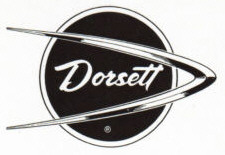
Dorsett Plastics Corp.
845 Reed St.
Santa Clara, California
Later located at 1955 Lafayette St. and then 2550 Scott Blvd in Santa Clara. Additional location in 1010 Dewey St., Bremen, Indiana and also Cambridge, Maryland.
According to the history below, Dorsett Plastics Company began producing Endura Craft boats in 1955. In 1958, the line became Dorsett Boats. Richard W. Dorst, (Dick), company president was a US Navy veteran, University of California graduate engineer, and alumni of the Harvard Business School. Before co-founding the company, he had seven years experience in reinforced plastics and the chemical industry. At the time of the article, Leonard L. Epsich was general manager and James D. Maloney general sales manager of the Bremen plant; James Hansen general manager of the Santa Clara plant, and John B. Moore Jr. general manager of the Cambridge, MD plant. John B. Moore Jr., a naval architect, worked eight years for Owens Corning before coming to Dorsett. In 1960, Dorsett was acquired by Royal Little's Textron, Inc. in 1960 for 115,000 shares of common stock in Textron, valued at $2,616,250 (New York Times, June 13, 1960). According to the same article, 1959 Dorsett sales totaled $2,800,000 and were projected to sell $3,000,000 for the 1960 fiscal year ending Aug. 31. The company was retained as the Dorsett Marine division with all management. Advertising was now through the San Francisco office of Foote, Cone, & Belding Inc. (New York Times, June 28, 1960). In 1964, Dorsett became independent once again when Textron sold the Santa Clara Division of Dorsett Marine to an entity known as The Dorsett Plastics Co. and headed by Richard W. Dorst as president (Marine Digest 1964, Vol. 42). American Marine Industries (AMI) acquired Dorsett in 1968, keeping Richard Dorst as manager (Yachting, 1968, Vol. 123). AMI had previously purchased the Sabre Craft and Bell Boy brands. However, AMI liquidated the Santa Clara plant in 1970. Sierra Performer Boats of Oroville, California reportedly acquired some molds and produced both outboard and I/O models of Dorsett boats. A similar firm in the Pacific Northwest region also produced copies, perhaps from the same molds, and marketed as Marlin Boats .
Some Documentation:

Company Overview, Page 1

Company Overview, Page 2
Model Information

1958 to 1960 Dorsett outboard boat models

1961 to 1962 Dorsett outboard boat models
1962 Dorsett inboard boat models
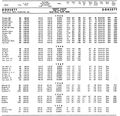
1965 to 1970 Dorsett outboard boat models
1958 Stuff:

1958 Brochure, Page 1

1958 Brochure, Page 2

1958 Brochure, Page 3

1958 Brochure, Page 4

1958 Brochure, Page 5

1958 Brochure, Page 6

1958 Brochure, Page 7

1958 Brochure, Page 8
1958 Miscellaneous

1958 Dorsett Ad Sheet
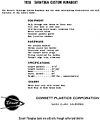
1958 Dorsett "Your Future Afloat" Ad
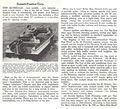
1958 Dorsett New Models Article

1958 Dorsett Boat Transporter Photo
1959 Brochure:
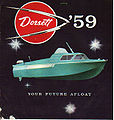
1959 Brochure, Page 1
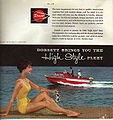
1959 Brochure, Page 2
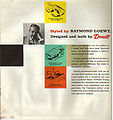
1959 Brochure, Page 3
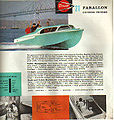
1959 Brochure, Page 4
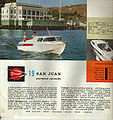
1959 Brochure, Page 5
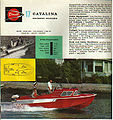
1959 Brochure, Page 6
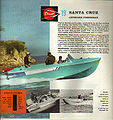
1959 Brochure, Page 7
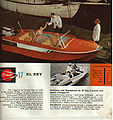
1959 Brochure, Page 8
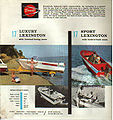
1959 Brochure, Page 9
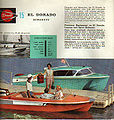
1959 Brochure, Page 10
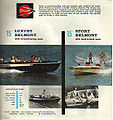
1959 Brochure, Page 11
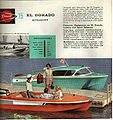
1959 Brochure, Page 12
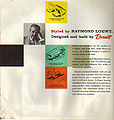
1959 Brochure, Page 13
1959 Miscellaneous

1959 Dorsett Ad
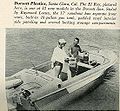
1959 Dorsett El Rey Ad
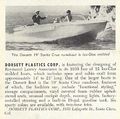
1959 Dorsett Boats Article
1960 Brochure & more:

1960 Dealer Letter

1960 Brochure, Page 2

1960 Brochure, Page 3

1960 Brochure, Page 4

1960 Brochure, Page 5

1960 Brochure, Page 6

1960 Brochure, Page 7

1960 Brochure, Page 8

1960 Brochure, Page 9

1960 Brochure, Page 10

1960 Brochure, Page 11

1960 Brochure, Page 12

1960 Price List
1961 Brochure:

1961 Brochure, Page 1

1961 Brochure, Page 2

1961 Brochure, Page 3

1961 Brochure, Page 4

1961 Brochure, Page 5

1961 Brochure, Page 6

1961 Brochure, Page 7
1962 Brochure:

1962 Brochure, Page 1

1962 Brochure, Page 2

1962 Brochure, Page 3

1962 Brochure, Page 4

1962 Brochure, Page 5

1962 Brochure, Page 6

1962 Brochure, Page 7

1962 Brochure, Page 8
1963 Information:
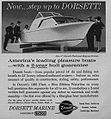
1963 Dorsett Ad

1963 Dorsett Daytona Luxury Mercury 650EL outboard boat test

1963 Dorsett Daytona Utility MerCruiser 110 sterndrive boat test

1963 Dorsett Fleetwood Offshore MerCruiser 140 sterndrive boat test
1964 Information:

1964 Dorsett Brochure, page 1

1964 Dorsett Brochure, page 2

1964 Dorsett Brochure, page 3

1964 Dorsett Brochure, page 4

1964 Dorsett Brochure, page 5

1964 Dorsett Brochure, page 6

1964 Dorsett Brochure, page 7

1964 Dorsett Brochure, page 8

1964 Dorsett Brochure, page 9

1964 Dorsett Brochure, page 10

1964 Dorsett Brochure, page 11

1964 Dorsett Brochure, page 12

1964 Dorsett Brochure, page 13

1964 Dorsett Brochure, page 14

1964 Dorsett Brochure, page 15

1964 Dorsett Brochure, page 16
1967 Brochure:

1967 Brochure, Page 1

1967 Brochure, Page 2
Color Options:
Typical Available Color Palette
Relevant Links:
Endura Craft - Where Dorsett Boats began
Dorsett Boats in Use
Back to Main Page
Navigation menu
Personal tools.
- View source
- View history
- Community portal
- Current events
- Recent changes
- Random page
- FiberGlassics Home
- PayPal Donation
- What links here
- Related changes
- Special pages
- Printable version
- Permanent link
- Page information
- This page was last modified on 12 January 2022, at 19:50.
- Privacy policy
- About Classic Boat Library
- Disclaimers

Lines & Rigging
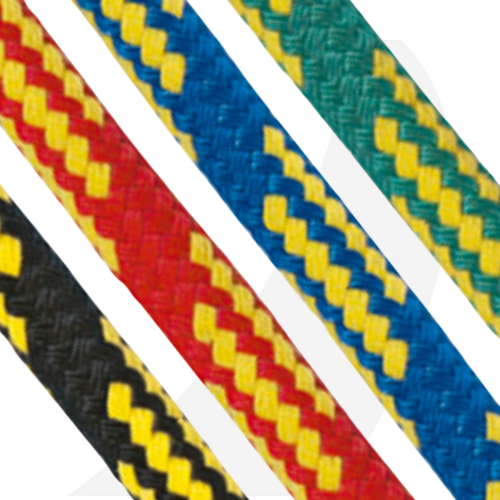
| |
 × You are using an outdated browser. Please upgrade your browser to improve your experience. We Ship Worldwide! | FREE SHIPPING! for US Continental orders over $99. Click for details.  Shopping CartYour cart is currently empty.. FREE SHIPPING! for US Continental orders over $99 click for details MAURIPRO Rigging - Halyards Full range of halyards made out of the latest on halyard lines with all needed splicing and required shackles (when applicable). MAURIPRO Sailing rigging shop division has created an easy to use set of tools to facilitate sailboat owners to find the correct length and specifications for your halyards. Need help? For any additional information or custom made running rigging, contact us; our riggers and sail consultants are ready to assist you with any of your sailing needs. MAURIPRO Sailing, your direct access to Sailboat Halyards - Pre Spliced and all your other sailing and boating needs. Copyright © 2024 MAURIPRO Sailing LLC. |
IMAGES
VIDEO
COMMENTS
Free shipping on qualified orders. Free, easy returns on millions of items. Browse & discover thousands of brands. Read customer reviews & find best sellers
Learn how to select the right halyard or sheet for your sailboat based on material, diameter, length, and attachment. Find out how to inspect, clean, and lubricate your lines to extend their life and performance.
Find sailboat halyards and mainsheets made from durable and strong materials for any weather condition. Choose from different brands, types and applications of sailboat running rigging lines.
Learn how to choose the right replacement running rigging lines for your sailboat based on material, construction and performance. Compare different fibres, covers and cores for sheets and halyards with a sliding scale chart.
The halyard is attached to the top of the mainsail sheet, or the gaffer, which is a top spar that attaches to the mainsail. You'll find halyards on both the mainsail and jib. Sheets - 'Sheet' is simply the nautical term for lines or ropes that are used to set the angle of the sail.
Ultimately, for the sake of a hundred dollars saved on a halyard, the owner never sees the full performance he paid for in his new sail. For an average boat in the mid-30-foot range, a new mainsail can cost from $2,000 upward, and the premium for a "performance" mainsail over a basic Dacron model starts at about $500.
Find marine grade sailing line and rigging for halyards, sheets, control lines, and more from trusted brands. Shop by boat, line type, diameter, material, and more with options for one design, pre cut, and custom rigging.
MAURIPRO Rigging Shop - Sailboat halyards, sheets & more. Full range of sailboat halyards and all other running rigging, made out of high quality sailboat lines and ropes, with all needed splicing and required shackles (when applicable). Shop by boat or length, MAURIPRO Sailing has developed an easy to use tools to facilitate sailboat owners to ...
101: Everything about Halyards & Sheets. Running rigging is more than just ropes; it is about how much they help you achieve your sailing objectives. Therefore, we should pay special attention to the lines' quality and ensure they will have the perfect balance between performance and endurance. A perfect condition halyard will prevent the sail ...
A tackline, sheet and halyard for the cruising chute if you have one - another 3; A mainsheet, halyard, kicker, clew outhaul, topping lift and probably three reefing pennants for the mainsail (unless you have an in-mast or in-boom furling system) - 8 more. Total? 23 separate lines for a cutter-rigged boat, 18 for a sloop.
Choosing the right halyard for sailboats can be difficult. This video contains a step-by-step guide and explains what's important.https://www.premiumropes.co...
With the high-load applications associated with larger cruising vessels, such as sheets and halyards, you'll need line that can handle a heavier load than polyester braids can. ... In Grand Prix racing, just about all of the line on the boat should be stretch resistant with a strong breaking point. Spectra®- or Vectran®-based rope is a ...
Question: Do you have guidelines for selecting halyards, sheets, etc. for my sailboat?. From the Rigger: First, if your old rope served its purpose but needs replacing, we recommend duplicating it as closely as possible to ensure that the replacement is the correct length and works with your existing clutches, winches, etc.The best bet is to shop with your old rope in hand.
Marine grade lines for sailboat main halyards, jib halyards, and spinnaker halyards. For advice on selecting the right halyard, see the information at the bottom of this page. ... 6mm SSR from Alpha Ropes is a perfect larger diameter sail control line or sheet on small boats and designed with Olympic racers in mind. A single braid blend of ...
Halyards & Sheets (By Boat) ... Sailboat Halyard Lines . Full range of halyards made out of the latest on halyard lines with all needed splicing and required shackles (when applicable). MAURIPRO Sailing, your direct access to Sailboat Halyard Lines and all your other sailing and boating needs. NEWSLETTER. General Information.
Lines made of polyester, Dyneema, Spectra, Technora, or Vectran are commonly used for sailboat halyards. Polyester lines offer good all-around performance and affordability. High-performance fibers like Dyneema, Spectra, Technora, and Vectran provide excellent strength, low stretch, and increased performance, albeit at a higher cost.
Line for Sheets. Sheets control trim of sailboat sails such as the mainsail, jib, and spinnaker. Browse top line recommendations for sailboat mainsheets, jib sheets, spinnaker sheets, and more. Check out performance favorites such as Dinghy Sheet XL, Rooster Polilite, Coppa 500, and Samson Ultra-Lite and reliable options such as Marlow Double ...
Learn to Sail. Your dream to learn to sail is close to becoming reality. Find a school, take a course and set off on your new adventure. ASA has everything you need to sail confidently and safely and you can start right now. We have compiled a list of tools and resources that will help you learn the basics of sailing before you get out on the ...
Dorsett. Dorsett Plastics Corp. 845 Reed St. Santa Clara, California. Later located at 1955 Lafayette St. and then 2550 Scott Blvd in Santa Clara. Additional location in 1010 Dewey St., Bremen, Indiana and also Cambridge, Maryland. According to the history below, Dorsett Plastics Company began producing Endura Craft boats in 1955.
Our selection of sailboat lines and rigging will keep you covered from bow to stern. Our halyard rope and other sailboat sheets are durable and high performing. WE SHIP WORLDWIDE: More Info. Toggle menu. FREE SHIPPING* US Continental (min order $98) International (min order $750)
Sailing Lines & Ropes . We at MAURIPRO Sailing are fully committed to be your Halyards, Sheets and Sailboat Lines specialist not only providing the sailing community with a comprehensive and easy to use web site, but also with all the appropriate technical information that you might need to select your sailboat equipment.
Mostly newer halyards and sheets. Last jacks for main sale. Ridged boom vang. 35 pound CQR anchorage with 25' feet heavy chain plus 200' anchor rode. Genco Bimini and dodger can be completely closed in for foul weather (2018). ... Boat is very comfortable cruiser and we have comfortable lived on the boat with 5 - 7 people in the north ...
Set up in 15 min or less. It is an excellent trailerable sailboat with overnight capability and a pleasurable daysailer. Has a porta potty, alcohol stove an radio/mp3. Galvanized trailer has brand new jack, brakes, bearings, and actuator. Price for boat and trailer is $4,500. Honda 8hp with electric start sold separately for $900.
MAURIPRO Rigging - Halyards. Full range of halyards made out of the latest on halyard lines with all needed splicing and required shackles (when applicable). MAURIPRO Sailing rigging shop division has created an easy to use set of tools to facilitate sailboat owners to find the correct length and specifications for your halyards.